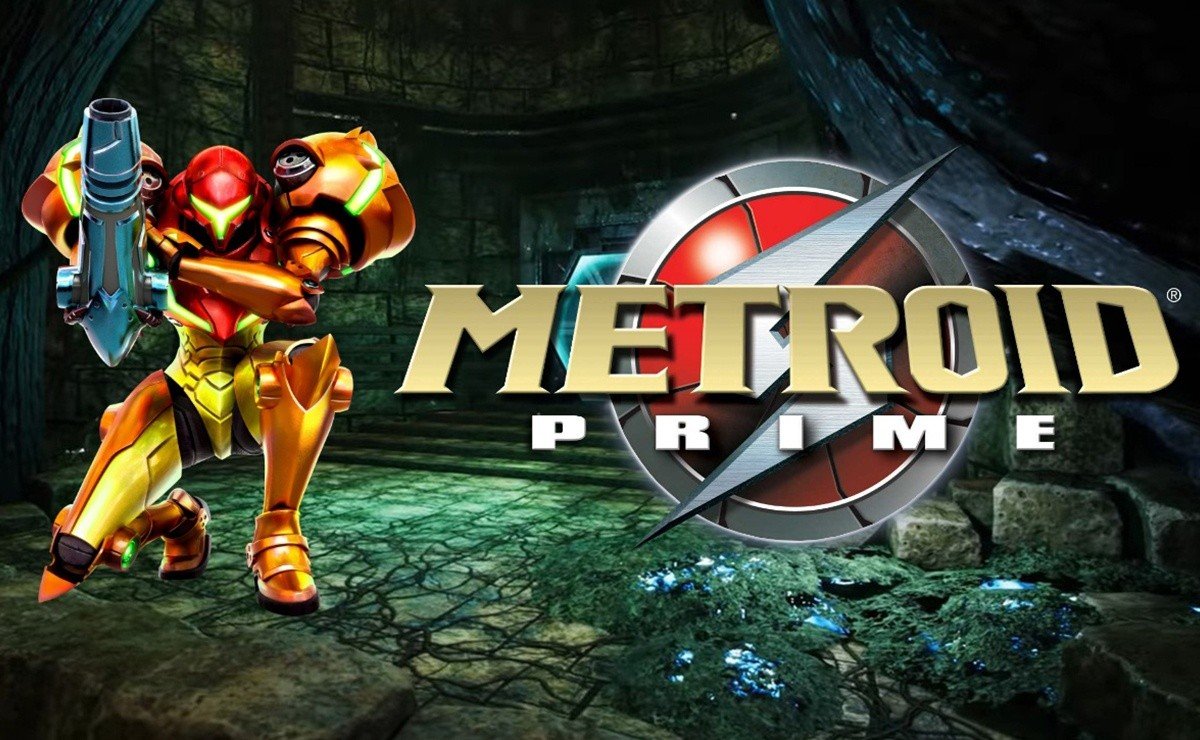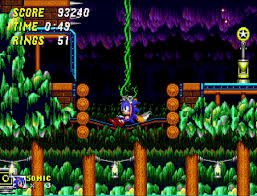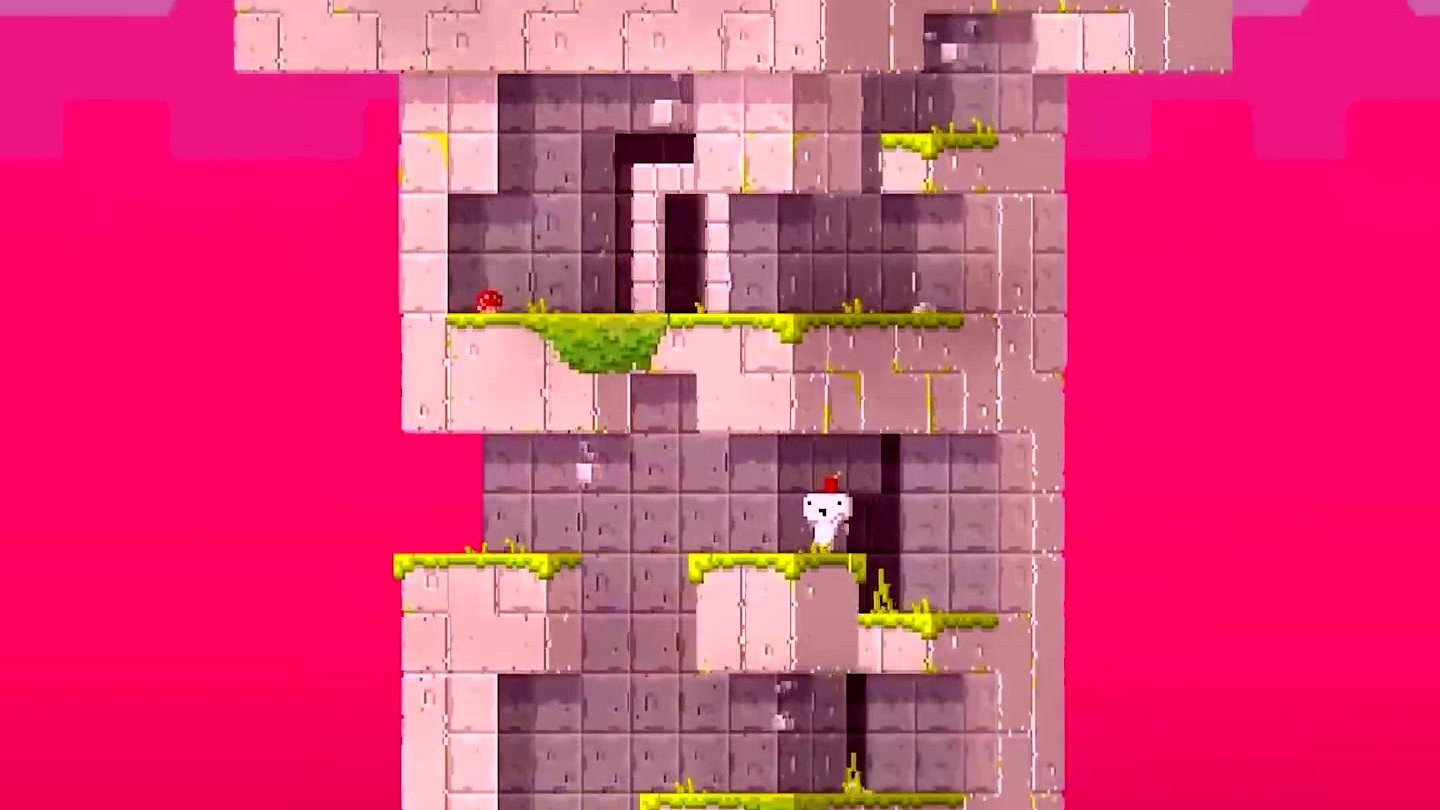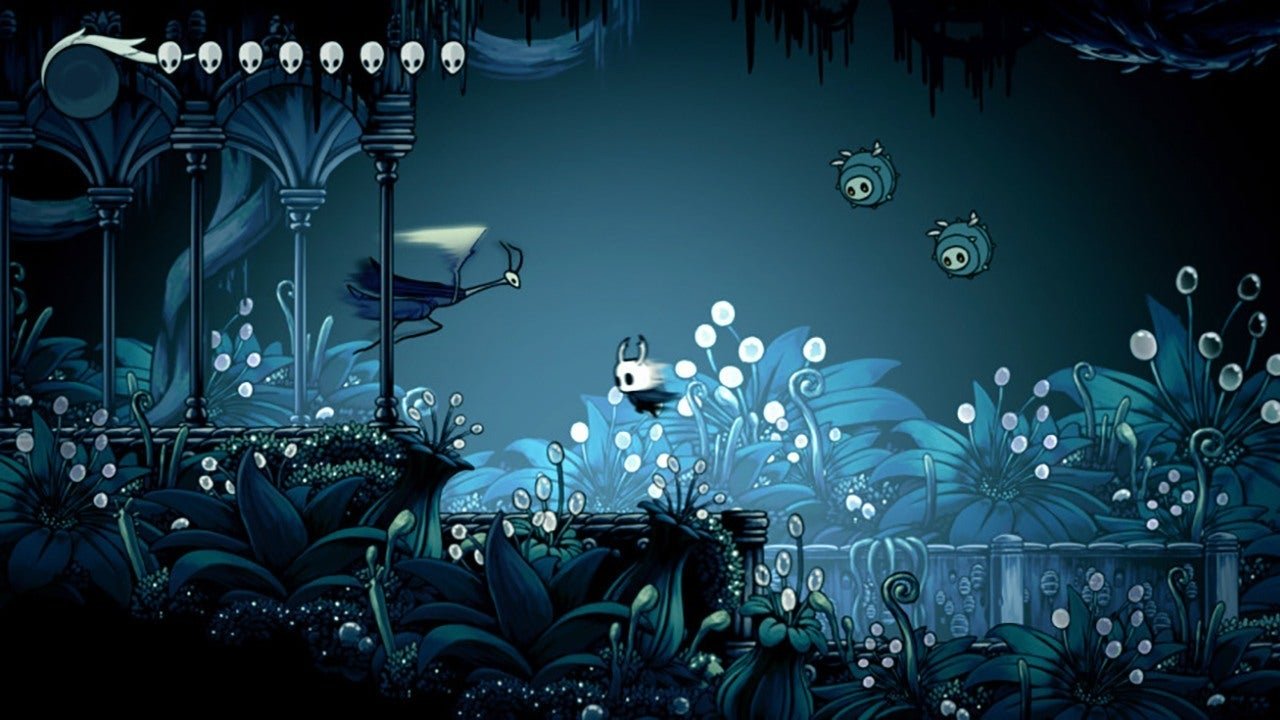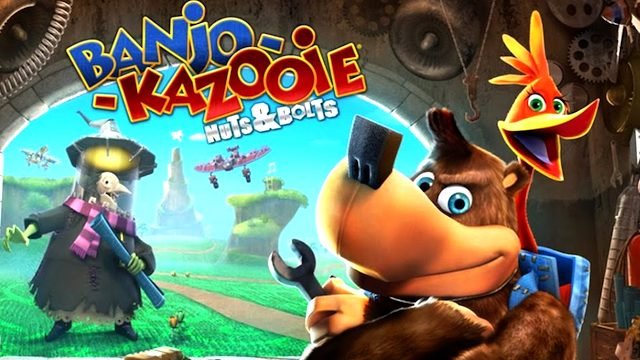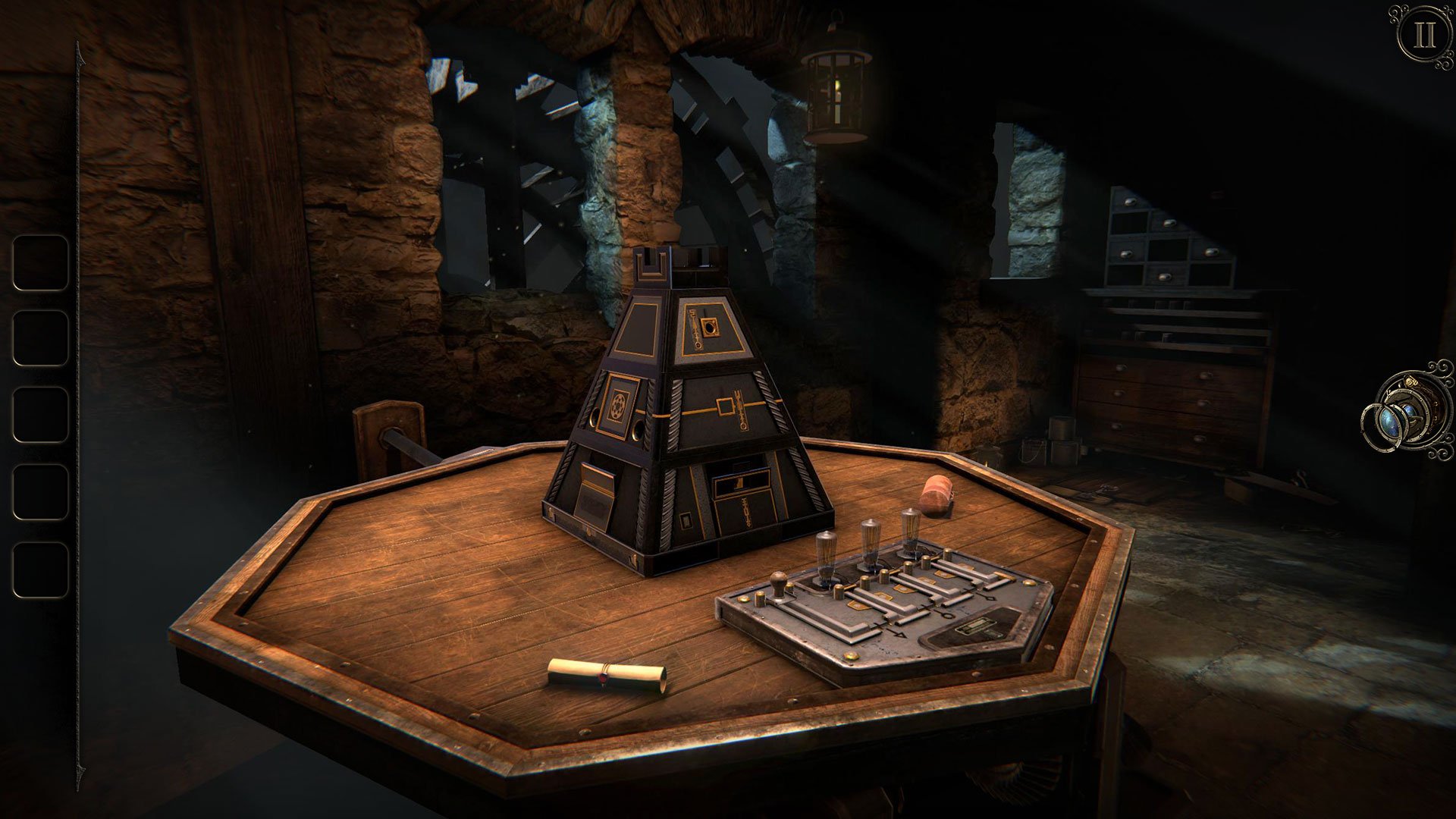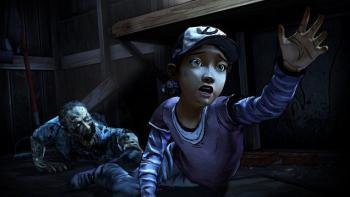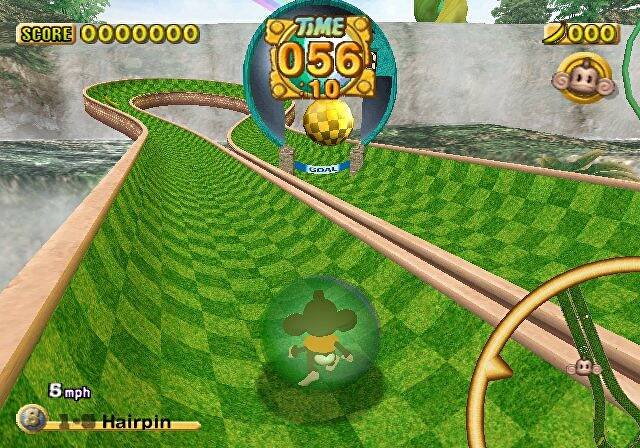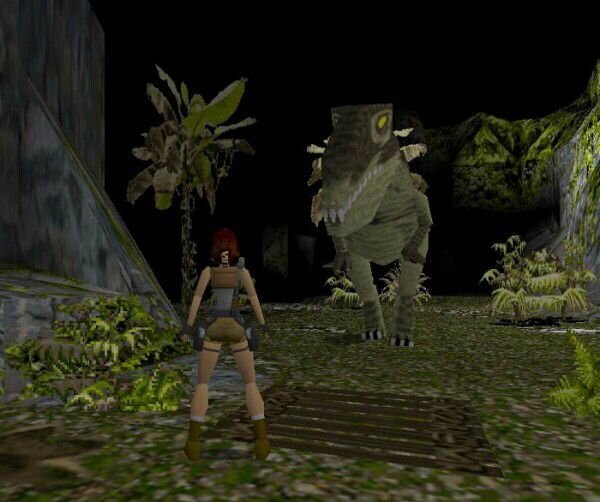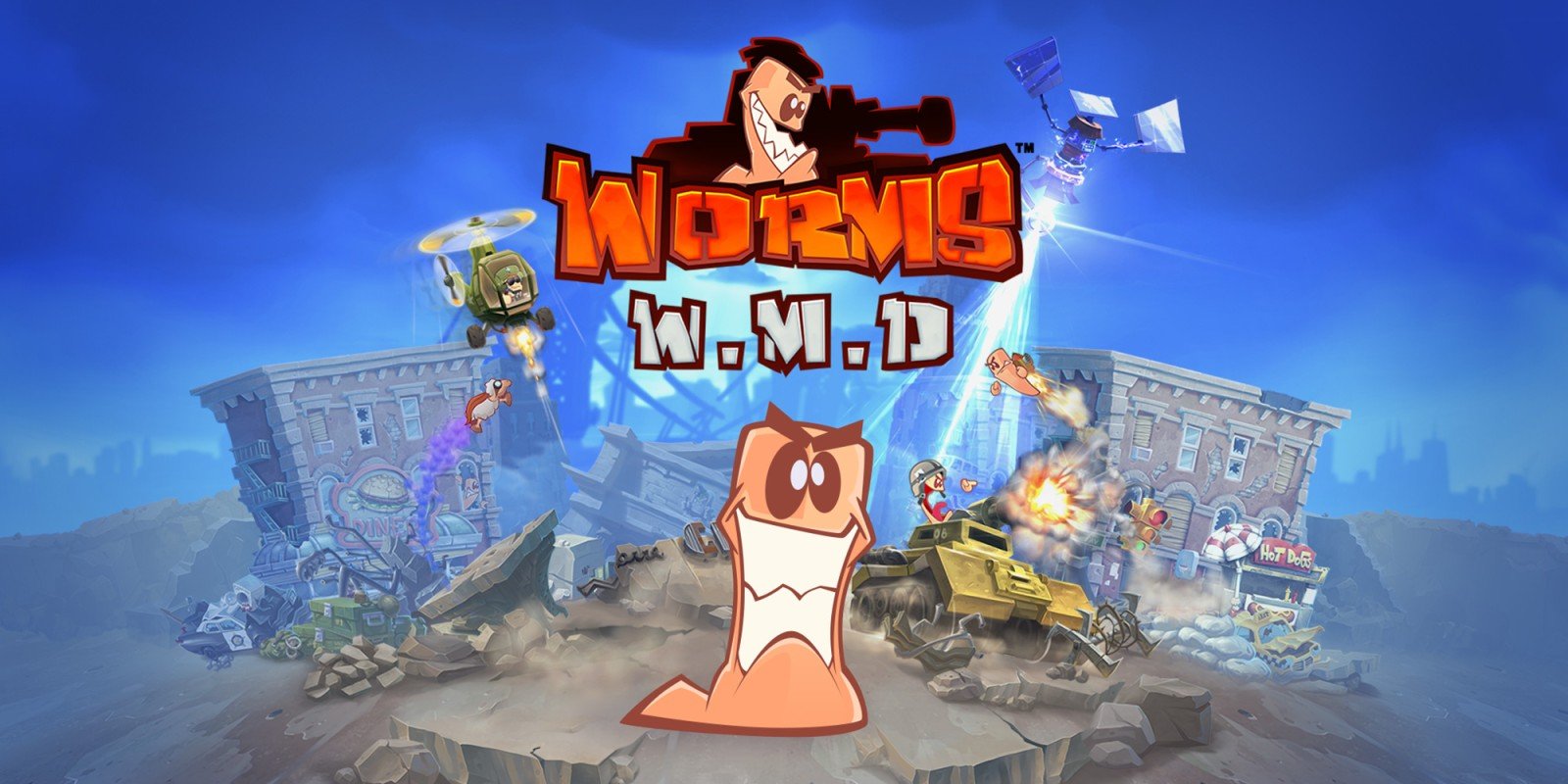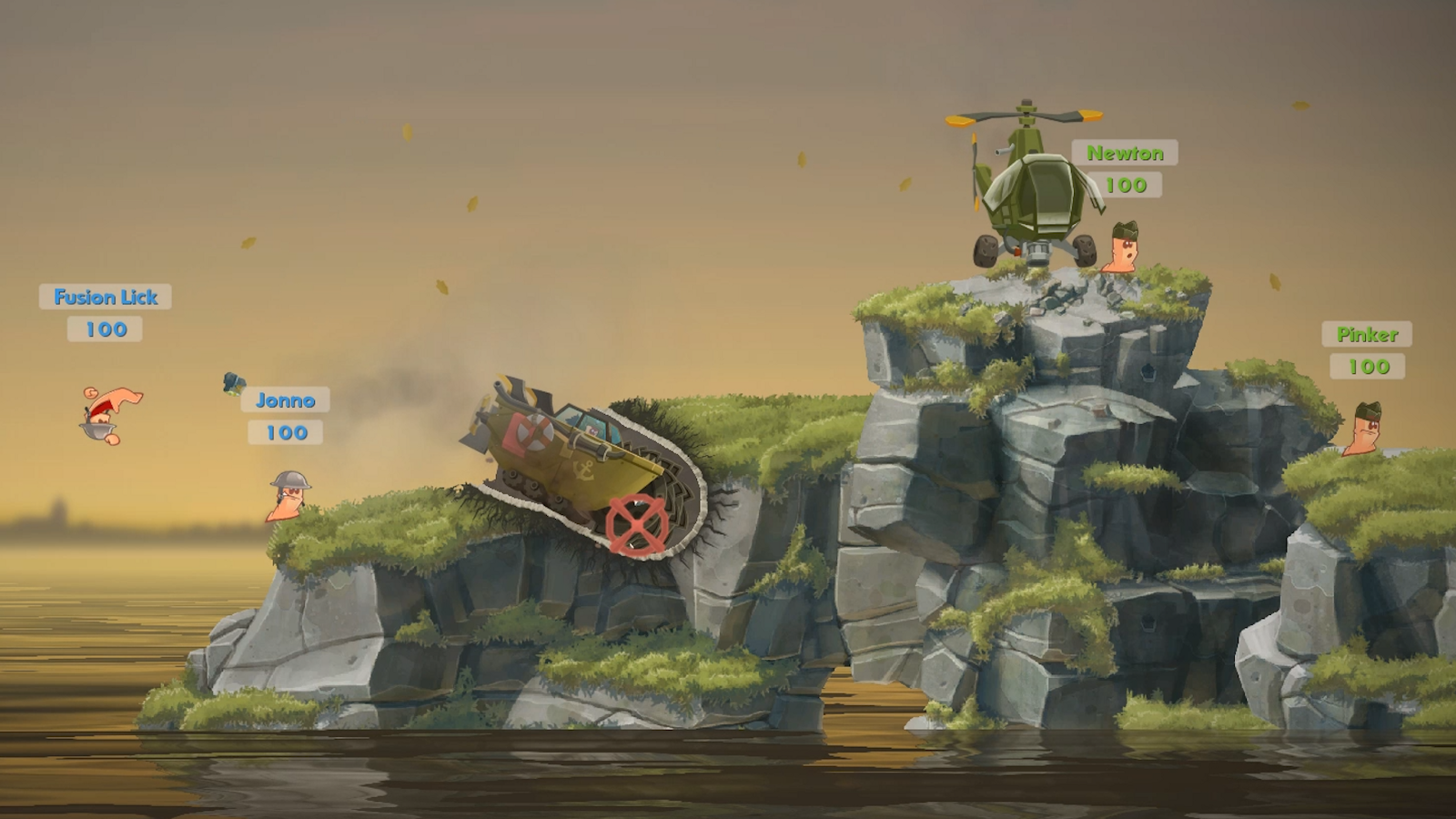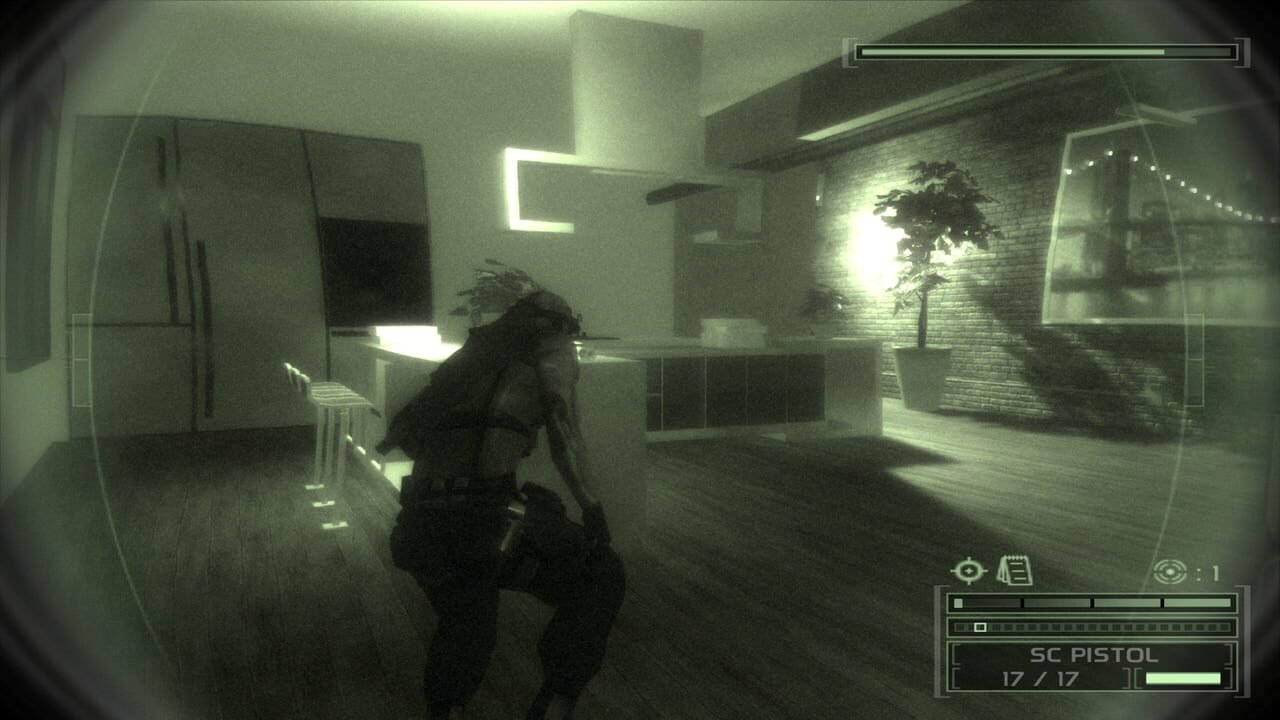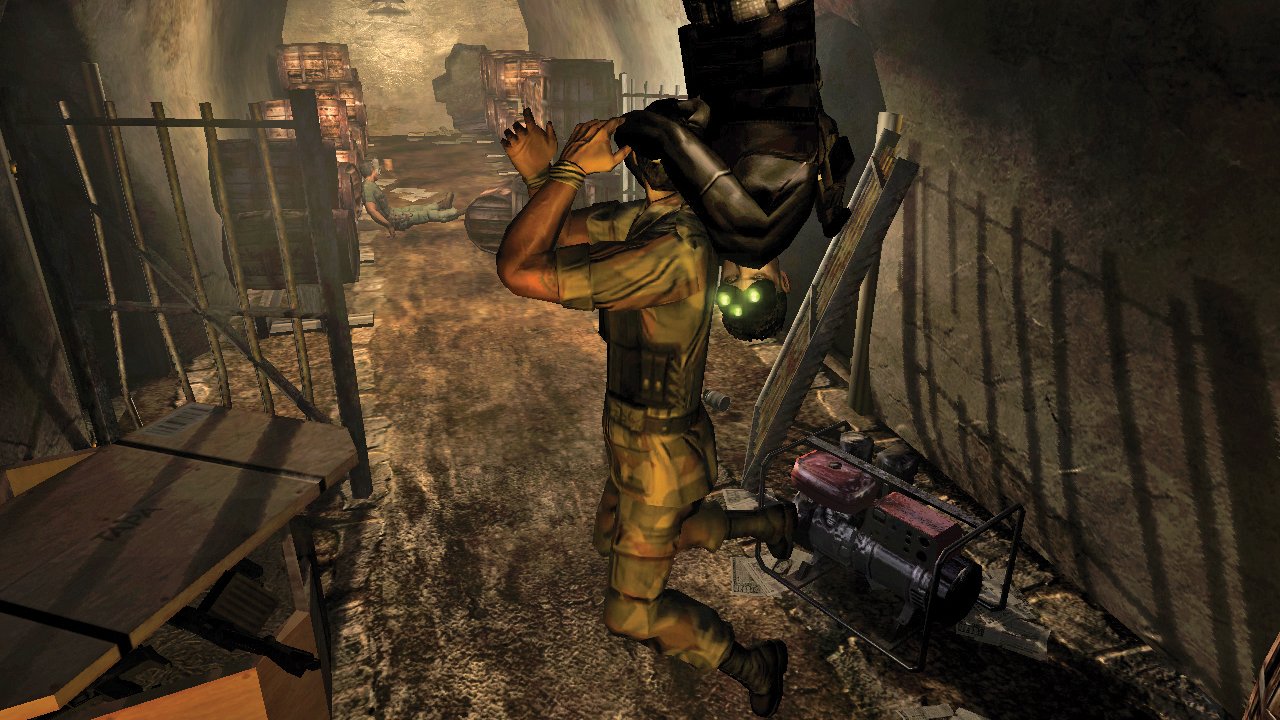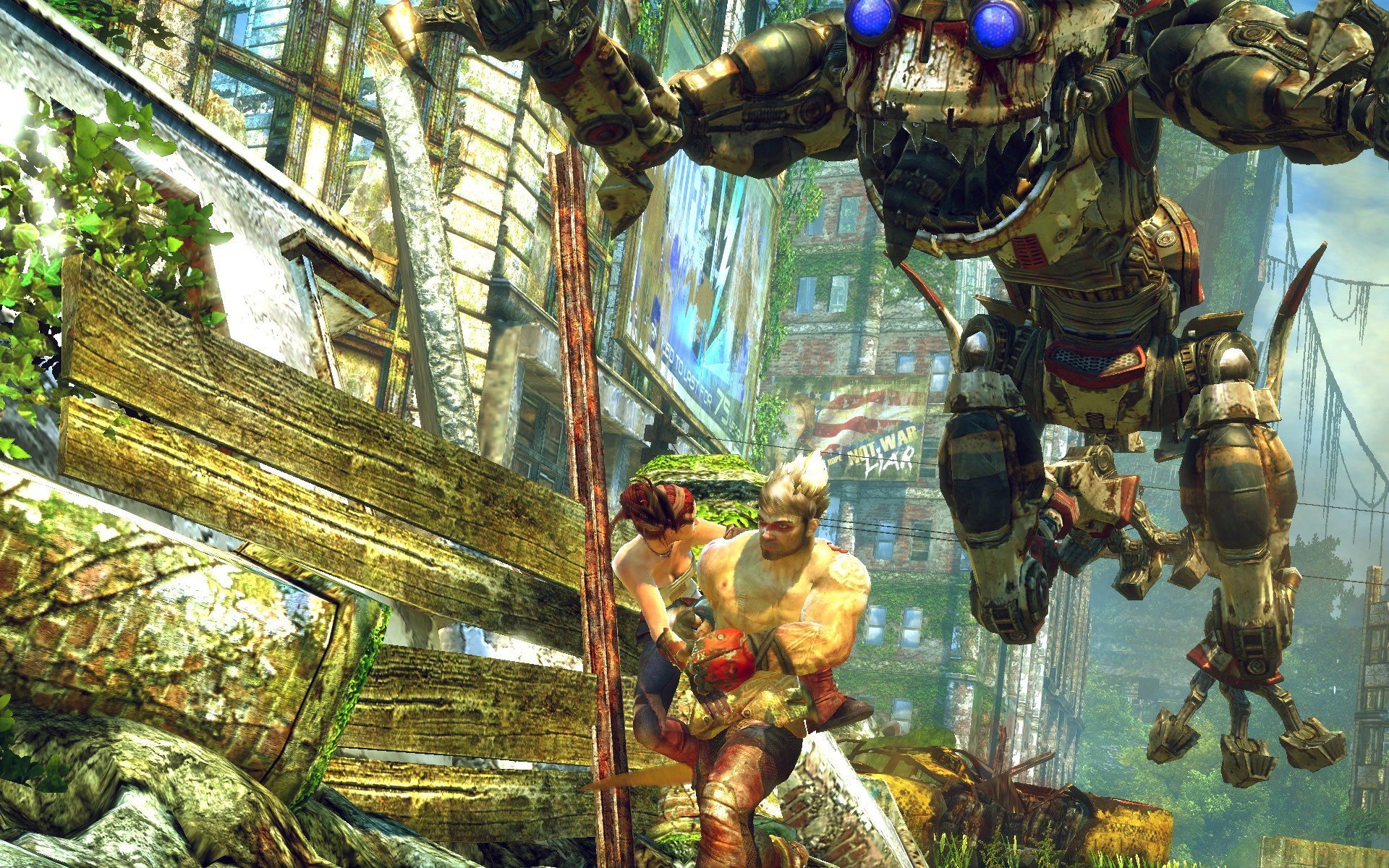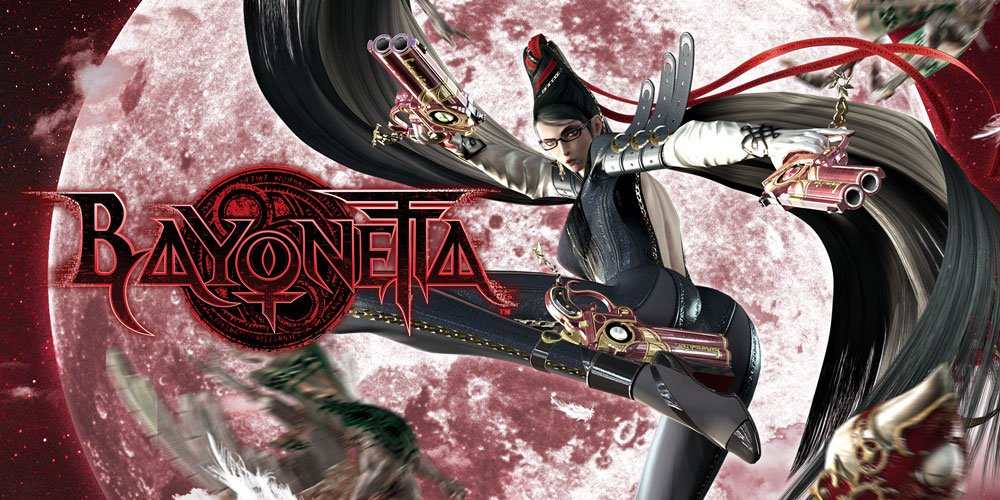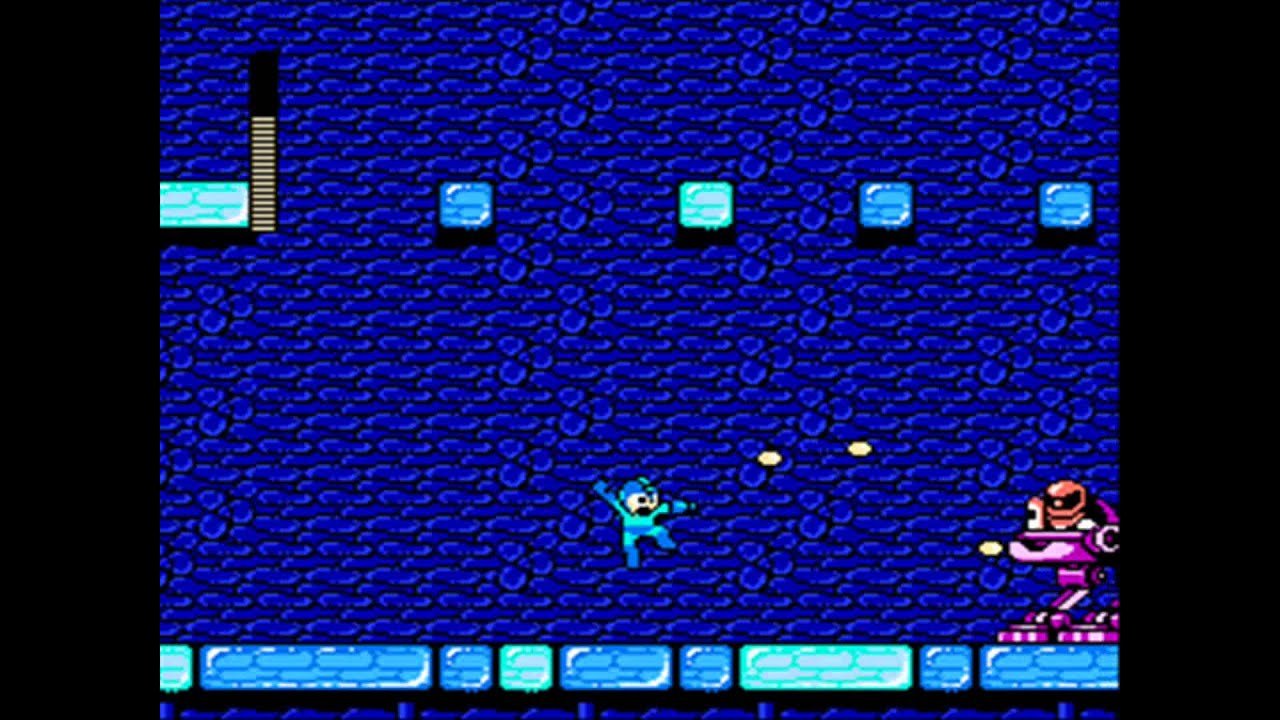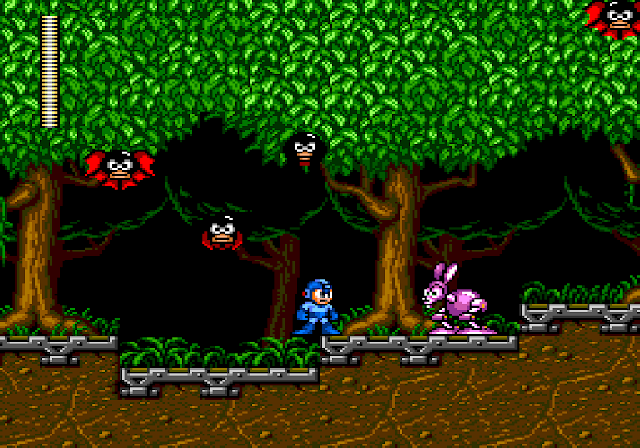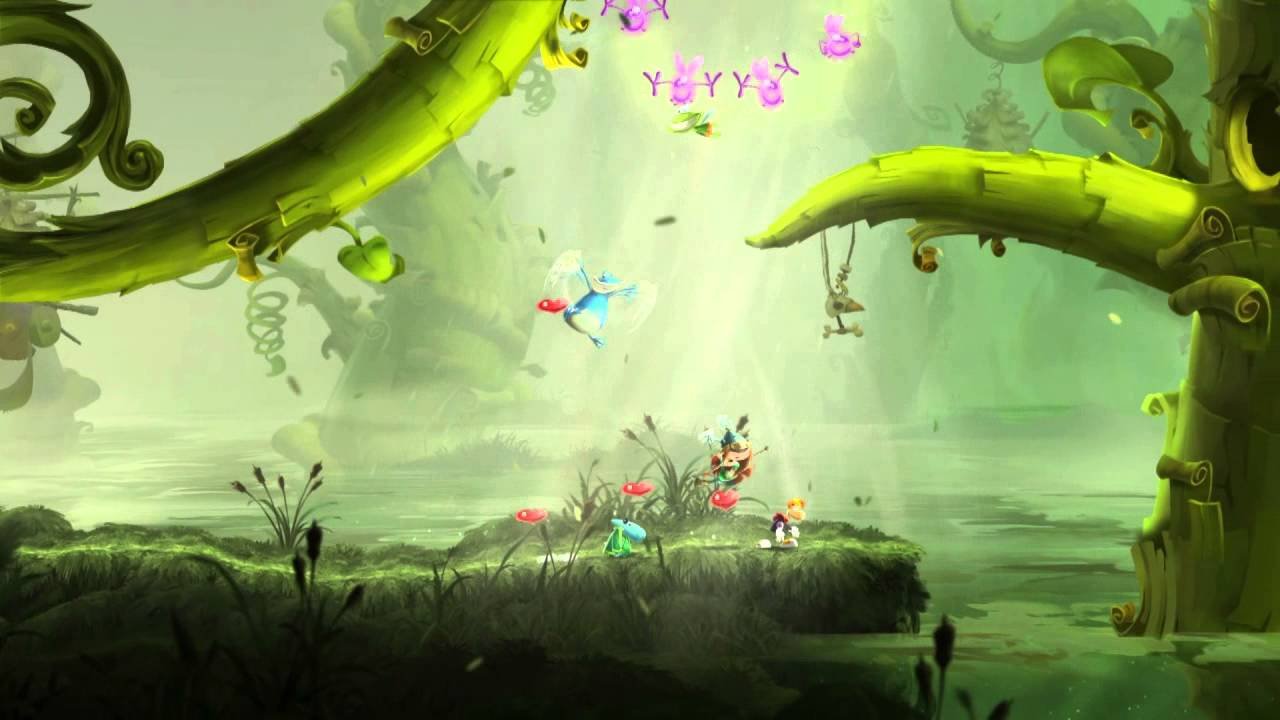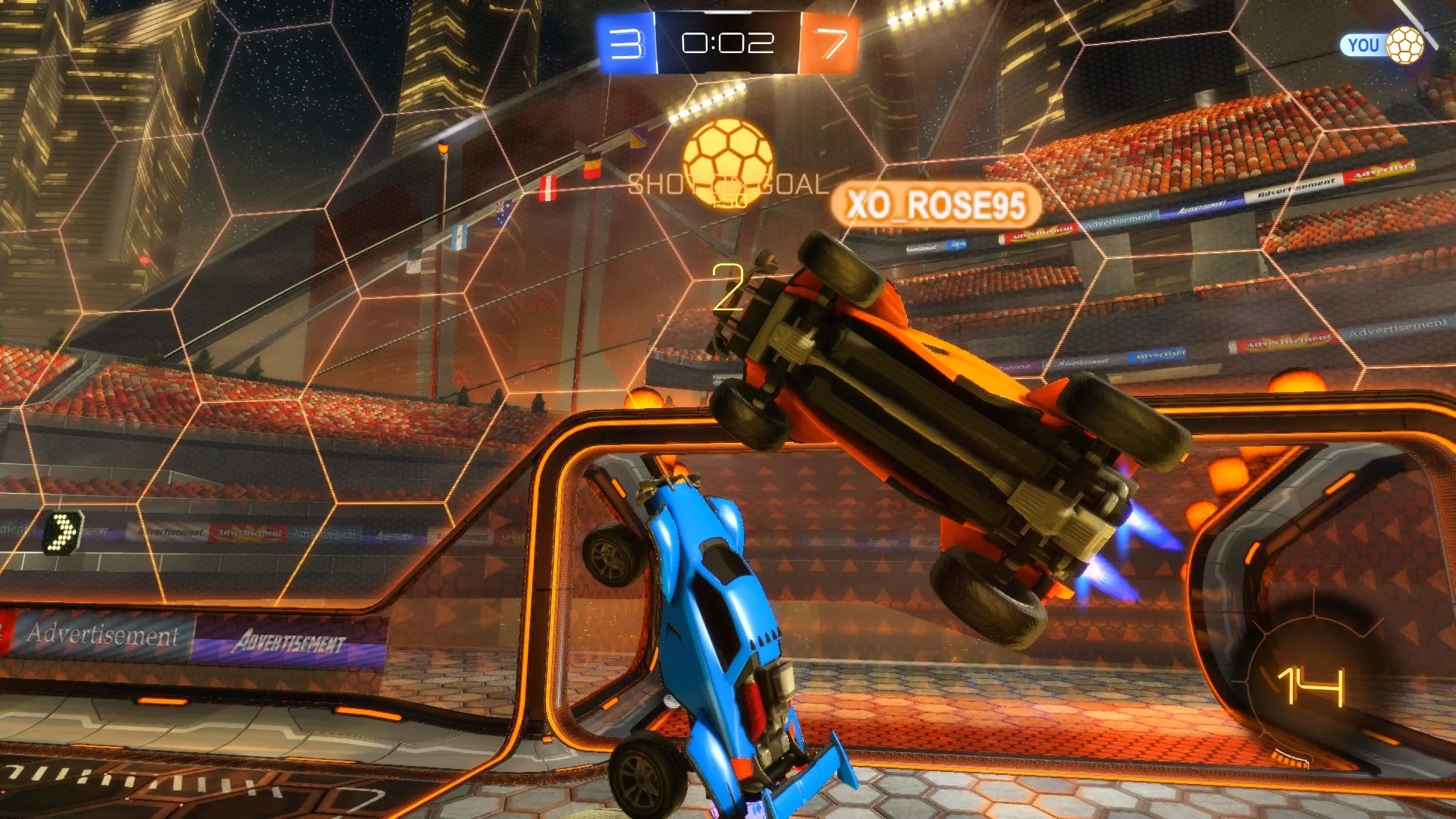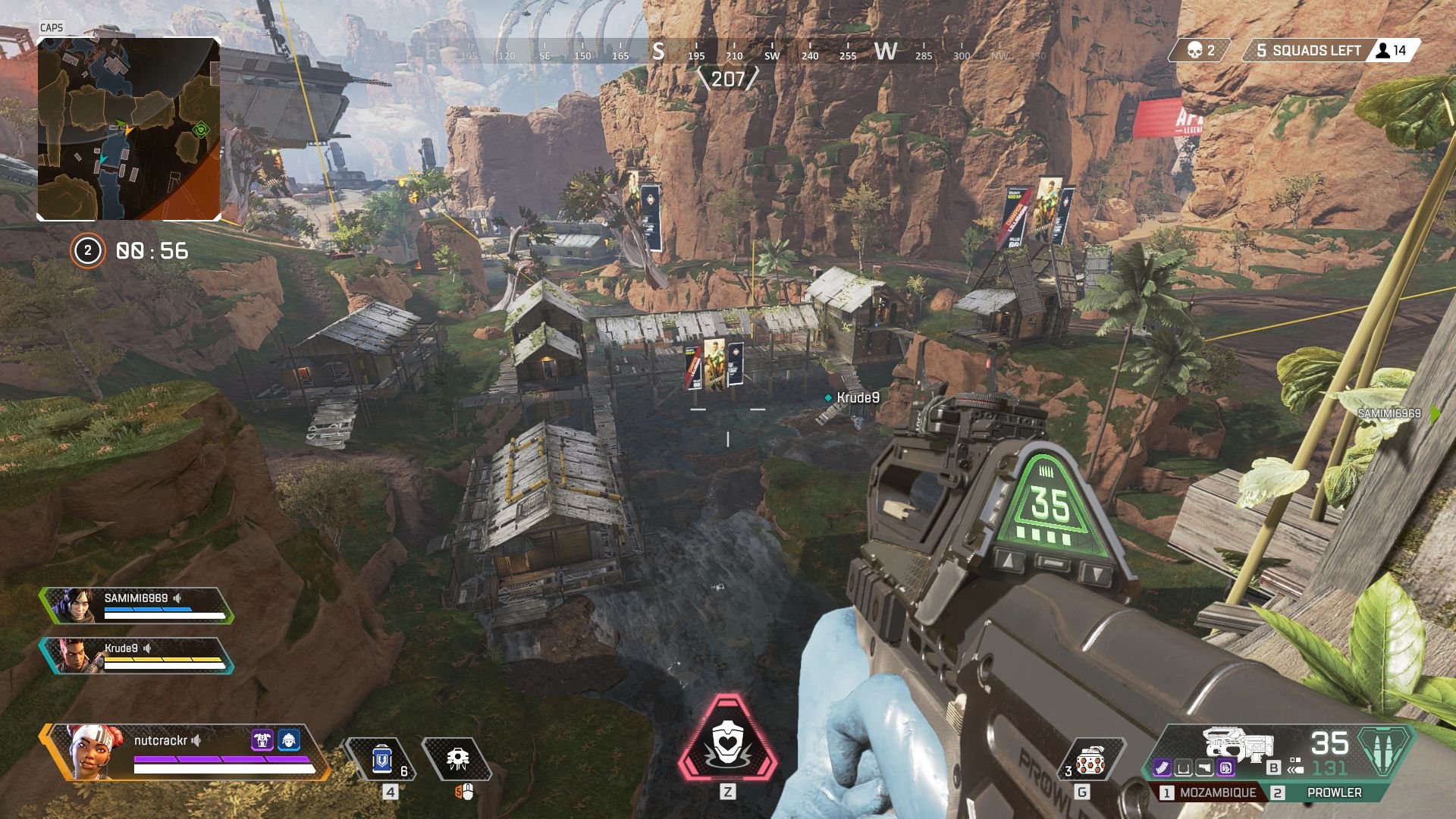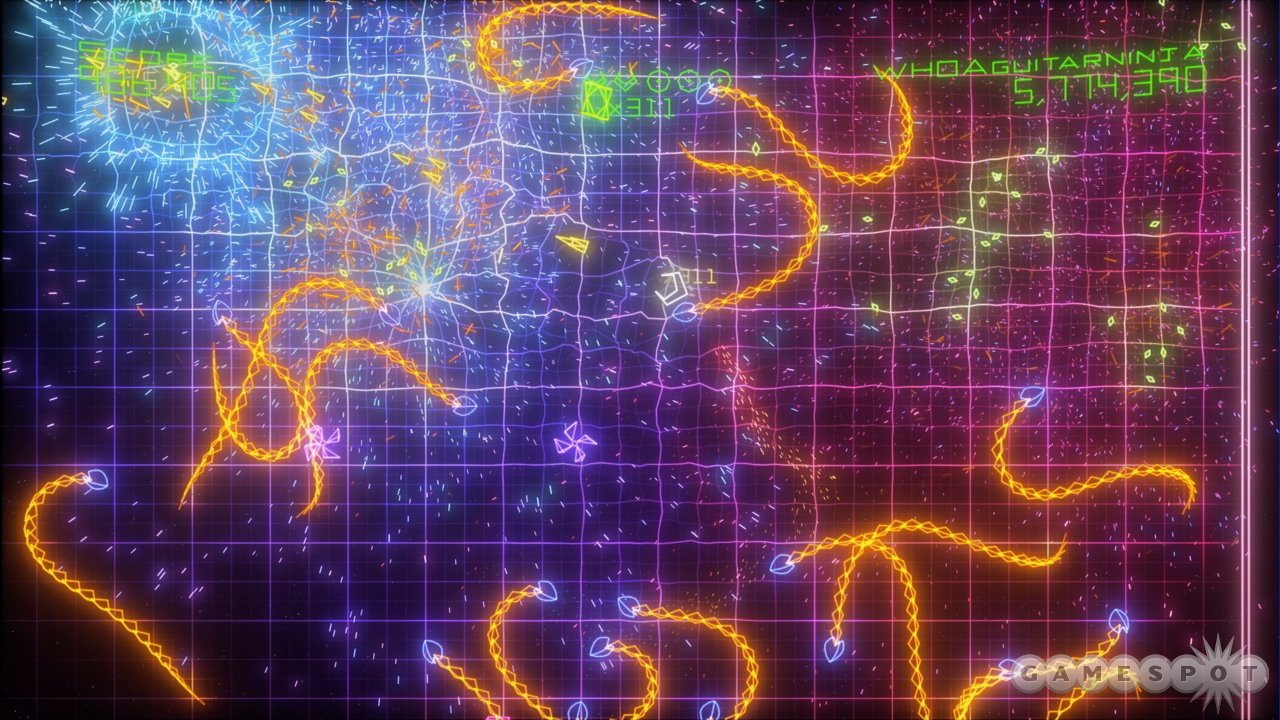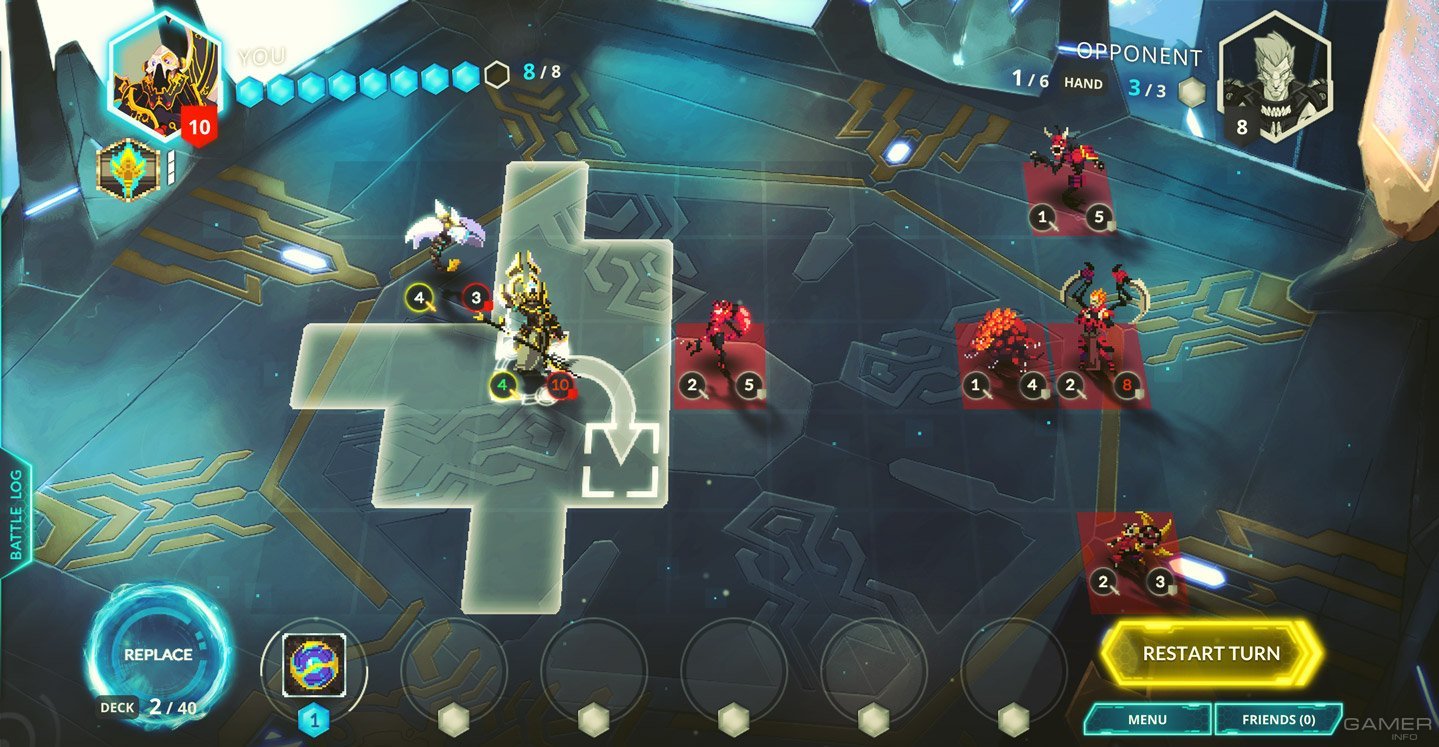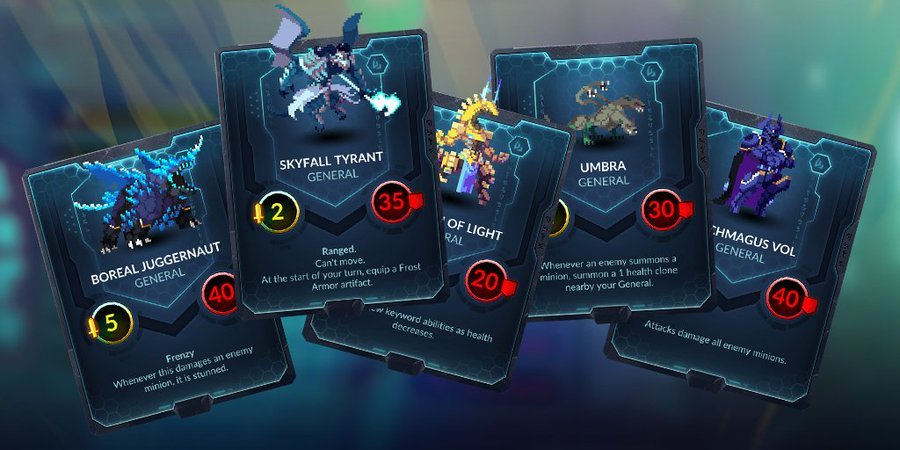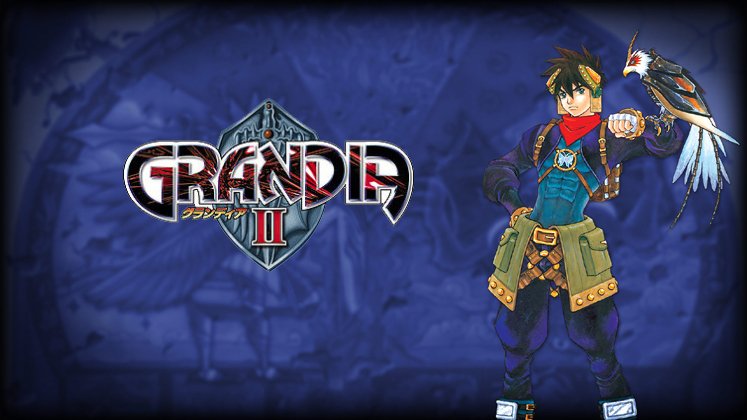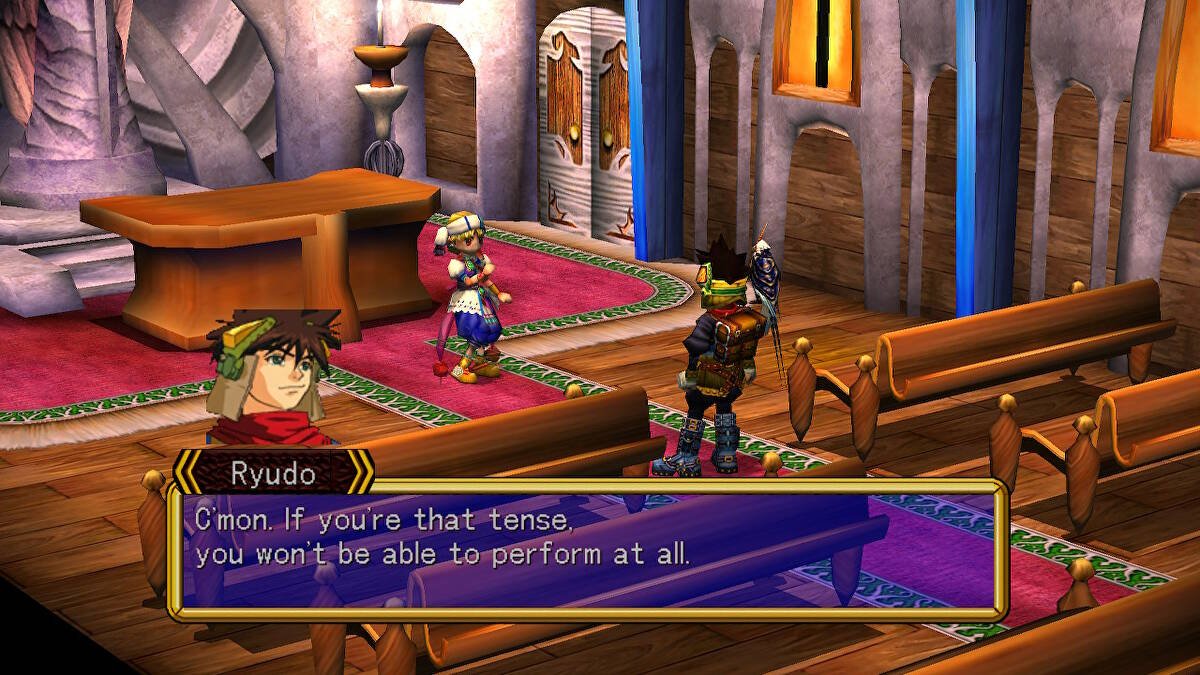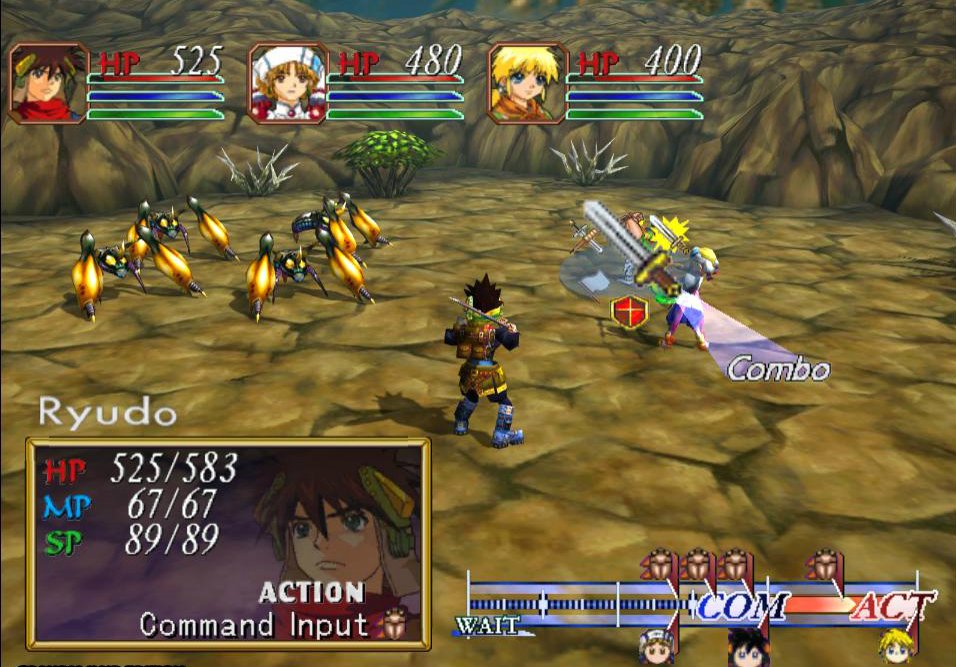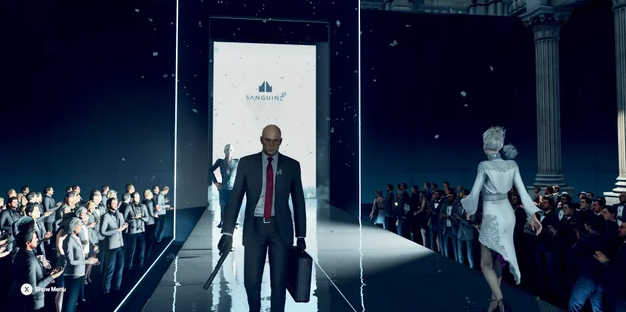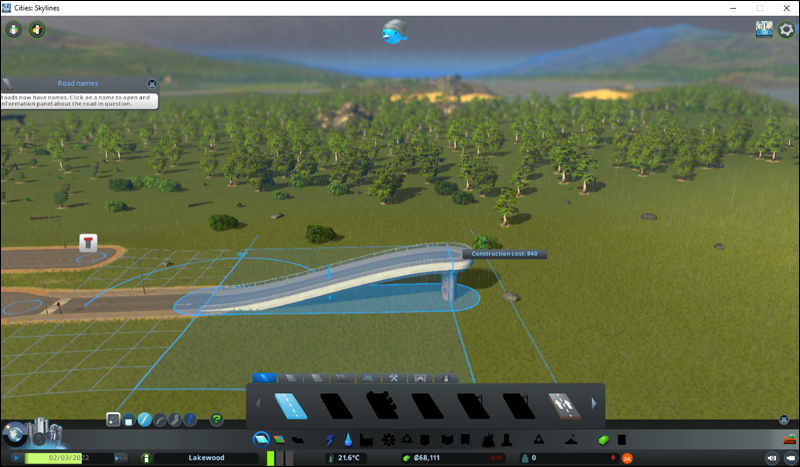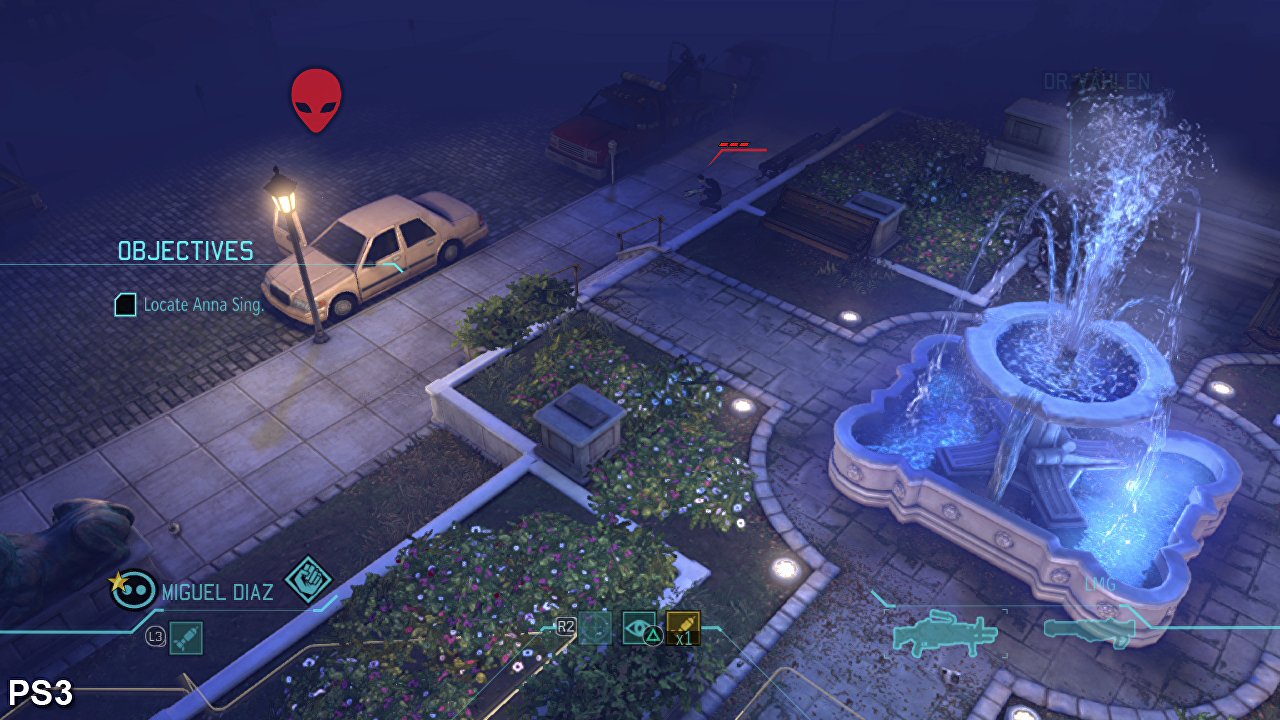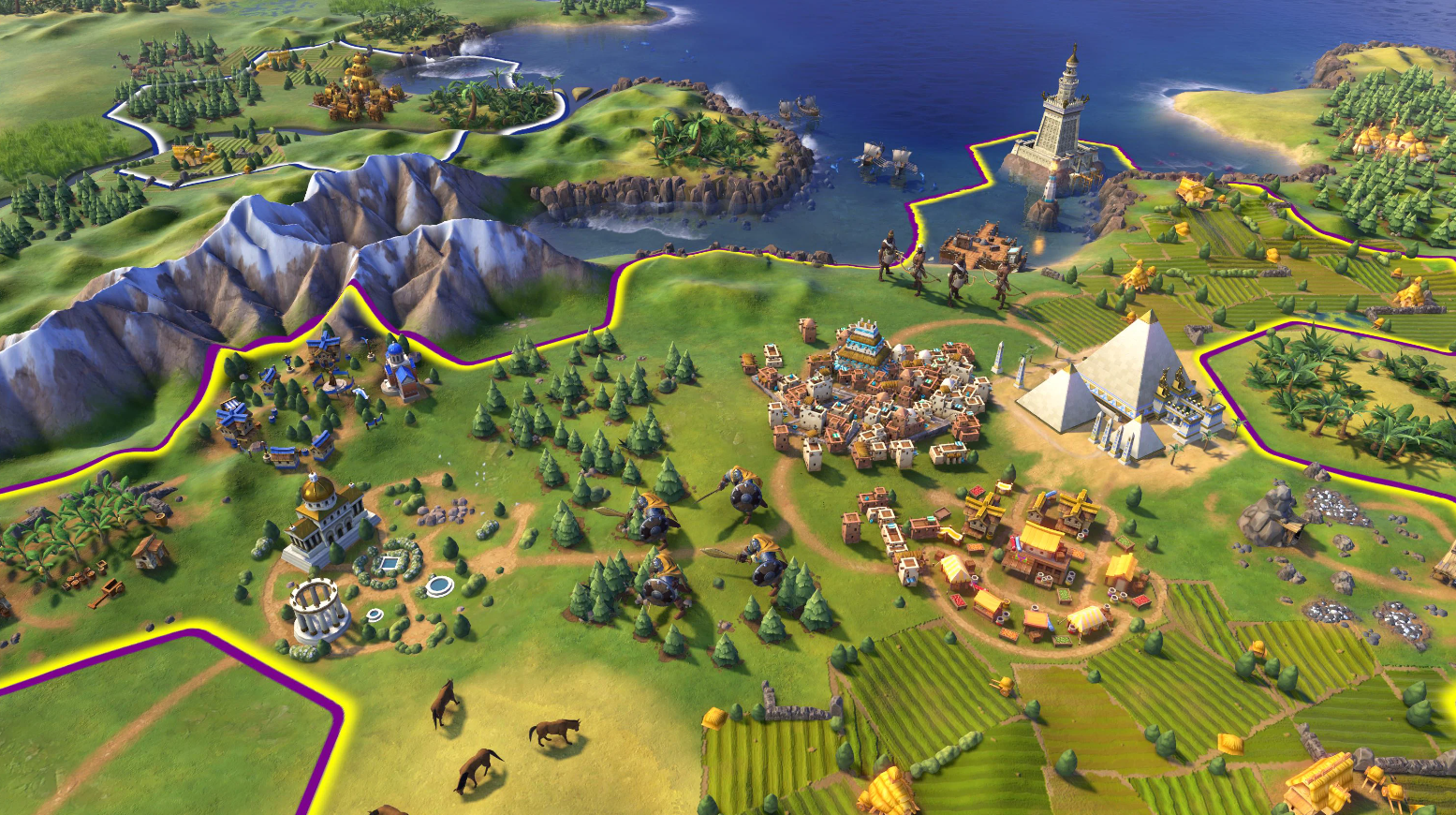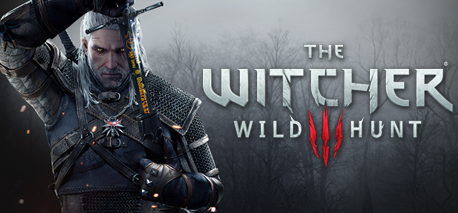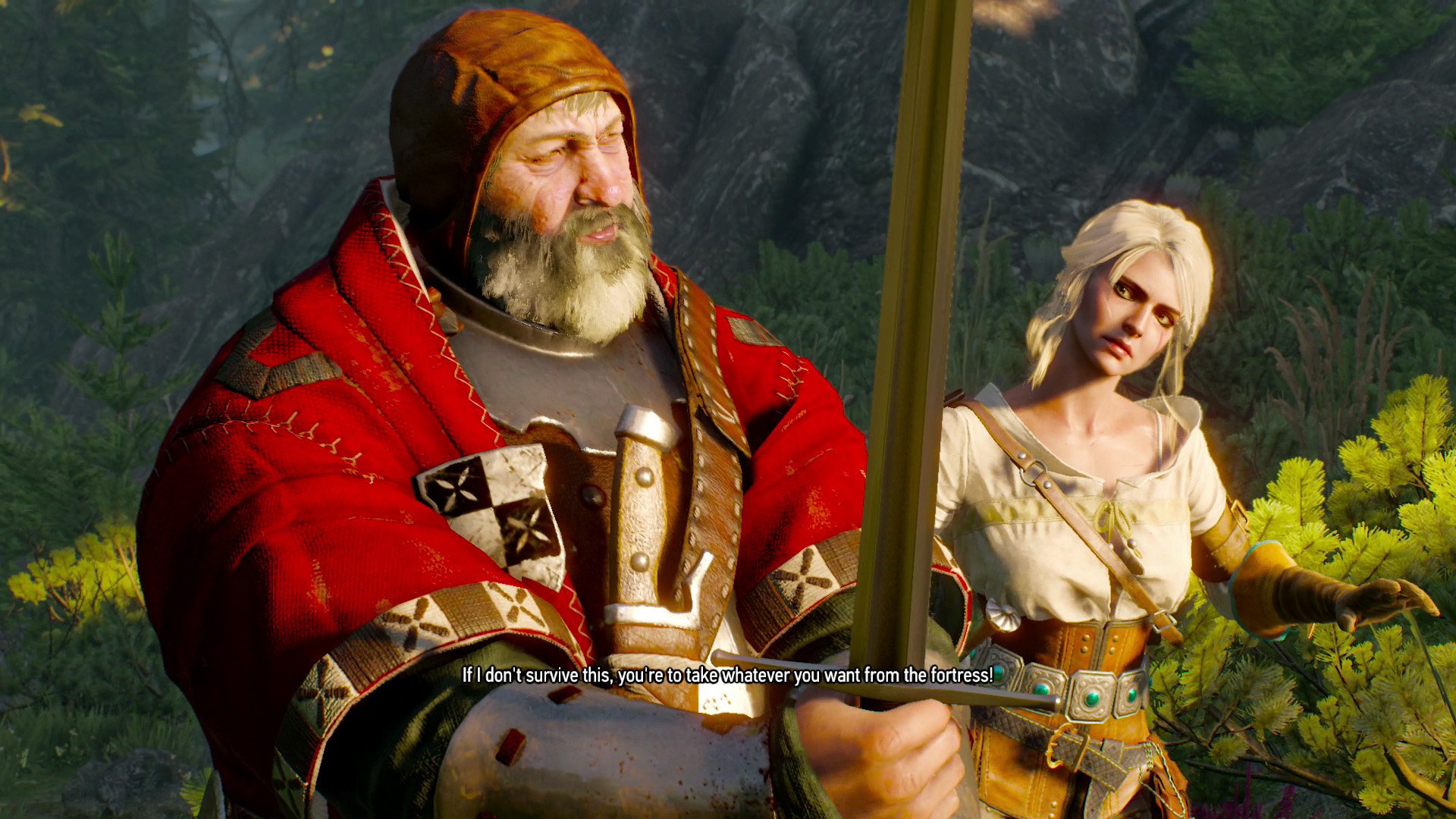Here we are, once again, to rank a pile of absolutely sensational video games.
For anyone who did not see the previous list, there was a version of it in 2019, and that sparked a lot of conversation with friends and colleagues at the time that I really enjoyed. Hopefully more of you will shout at me from afar championing iconic exclusions like Final Fantasy, Metal Gear Solid or World of Warcraft once again. I like hearing why you think I’m wrong! I do, admittedly, prefer it when you think I’m right, or at least find a game that I love but you have never heard of. This list is meant to be a celebration of great games, so I hope each of you will find something here that you want to go out and play for yourselves.
This was difficult to do again, and especially hard to call the Top 10. Like before I had a few ground rules.
Rule #1 - Games that I have worked on are ineligible for the list. So, nothing by Popcap or DIGIT Games Studios. Maybe I’ll write an article on these games in the future if I can.
Rule #2 - Only one game from each series/franchise is allowed. So, only one game from the Halo series or the Resident Evil series, etc. This is mainly so that the list doesn’t become a sequel-fest. I’d rather have a diverse and interesting list, than have all the same things for piles of this list. In the individual entries where I think multiple games are fantastic, I’ll mention them, briefly.
Rule #3 - If I haven’t finished the game in question, it needs to wait for a future list. Not many games fall into this category, but there are a few I’m part-way through over the last few months that may eventually be finished and turn out to be Top 75 material. But for now, adding unfinished games just seems unfair.
That’s it.
On to the games…
#75 Metroid Prime
(previously #82)
Nintendo are the masters of turning a beloved franchise of yesteryear into a revolutionary 3D masterpiece. They did it with Super Mario (we’ll get to him later) with possibly the biggest splash of technological-leaping in video game history in Super Mario 64, and on the Gamecube they unleashed the jaw-dropping Metroid Prime.
When this game landed in 2002, it truly felt like Nintendo could do no wrong. They took something that was iconic, adored and genre defining (ever hear of the Metroid-vania genre?) and turned it completely on its head, took it into 3D - and here’s the crazy part - improved it in almost every way.
Metroid Prime is a game that has actually gone up in my opinion in recent years. I took it out for a play fairly recently and was surprised by how engrossing it still is. The control scheme definitely hasn’t aged well, though you do adjust and it can be enjoyed just fine after a little bit of shaking off of the last 20 years of quality-of-life FPS game improvements you’ve been used to... When you unlock some of the cool “ball” abilities, Metroid Prime becomes a work of art to get lost within. The boss battles were cripplingly hard at times, and the only knock I have on this game, but I remember locking myself away with this game for weeks on end, and feeling that its Game of the Year status was wholly justified. Approach this one with its age in mind, be open to its possibilities, and you’ll have a great time.
#74 Sonic The Hedgehog 2
(previously #55)
There was a point in my childhood where the world always seemed like it was blasting past from right to left, because I spent so much time playing Sonic the Hedgehog games on my beloved Sega Megadrive.
Sonic is one of the most iconic gaming characters of all time, and is very much a slice of the 1990s in pixel form. Sonic 2's levels were that bit faster than the original's, and that's what you're looking for with this series. Running down slopes to gather up speed, rotating into a ball to go faster, doing loop-the-loops, jumping huge distances onto springboards… it's just fun.
The Sonic games have always fought with balancing gameplay decision making versus that sense of speed, and they absolutely got it right in Sonic 2. The original series of Sonic games are all pretty good, with Sonic 3 & Knuckles (a complex multi-cartridge abomination back in the day) the one I went back to most recently, and absolutely loved as well. Most of the Sonics from after Sonic Adventure are pretty dire, but the old ones retain their magic, even today.
I'm also pretty sure the danger music for air in the water level traumatised me as a child.
#73 Fez
(previously #65)
Fez has a gorgeous colour palette and visual style, done in pixel-art techniques, but with a cool twist. Everything is actually in a 3D space, but you can only interact with two of those dimensions at once. Areas you need to access, and the platforms required to navigate there, are often impossible to see from your current angle. It’s this pseudo-exploration that makes Fez special.
At its core, Fez is a 2D platformer, though it challenges your sense of perception to adjust the environment to adapt your path in mind-bending ways. Your aim is to collect pieces of an artifact required to teleport to new areas and continue that pattern through to the end.
This stunning game blends puzzles and platforming nicely and in my opinion is a must play game for anyone who likes a challenge.
#72 Towerfall Ascension
(previously #92)
Towerfall Ascension is a local multiplayer deathmatch game. There are other modes, but they’re of no interest to me. The only way to experience this one is to get 4 friends in front of a big screen with a controller in hand and go for the kill.
Towerfall looks like a retro game, but was released in 2013 by MattMakesGames. The beauty of Towerfall is in its simplicity. You have a bow and arrow, as do your opponents, and you must shoot everyone else to win. Last person standing. Repeat.
The level design is tight and provides opportunity for trick shots and taking cover, with wrapping exits/entrances adding layers to the possibilities. Upgraded arrow types and power ups mix the gameplay a little, but the pure reflex action gameplay is an adrenaline hit every time even when you’re just firing the standard projectiles. One of the best local-play games out there.
#71 Hollow Knight
(previously #46)
This game is all about learning from your mistakes, attuning your senses, your instincts, and adapting. This beautifully illustrated 2D platformer / action game is filled to the brim with traps, trick enemies and peril. Every step of your journey is a risk, and if you fall or take enough hits, you’re going to lose all of the progress you’ve made on this run.
Hollow Knight’s controls are perfect. The soundtrack is one of the very best ever made. Visually, it’s one of the most aesthetically pleasing games you’re ever likely to experience. This game has so much to like about it.
Along with all of the immediately amazing up-front and forward elements of this game, there’s also a strong behind-the-scenes set of progression tools and upgrades that enhance the gameplay further. Unlocking each special ability in Hollow Knight is like opening up another dimension of possibilities. Never before in a game have I been more excited to buy a marker for my map, because if i don’t remember where something is now (that I will want to find later) it’s going to be agonising getting back to it in the right state to harness the best of it.
Boss fights are stressful in Hollow Knight, and become either a source of maddening frustration, or immense satisfaction if and when you finally topple them. Hollow Knight has gotten a bit of a reputation as a trendy hipster indie title. That’s not really fair. It’s actually a really fucking good trendy hipster indie title.
#70 Jet Set Radio
(previously #31)
The Dreamcast had so many games that were blindingly original and massively under-appreciated. Jet Set Radio is about street graffiti gangs and pirate radio stations. Your role as a skater in this crew is to “tag” your art all over the town in place of rival gang tags, who will try to knock your ass out in retaliation.
Jet Set Radio came along a few years after the Tony Hawk craze was at its fullest, and I see it as Sega’s attempt to take that skate-score genre into a new direction. What they ended up with was way more than the sum of its parts. They were super smart with how they went about presenting this title. The gorgeous cel-shaded graphics were a precursor to the style used by so many other games later. They offered the chance for players to create their own graffiti tags and use them in-game, which was a level of customisation unheard of in console gaming in the day. I wonder how many dicks people made on day one. The controls around tagging were also pretty fun, often using the rotation of the analog stick in a particular direction a certain number of degrees in a specified time, which felt curiously like you were holding the spray paint cans.
Jet Set Radio had a killer soundtrack and fantastic level design, and as a package the whole thing was incredibly original. There was a sequel on Xbox called Jet Set Radio Future, which was also excellent and well worth a try. This is one of the best Sega titles and one worthy of a modern sequel some day.
#69 Tony Hawk’s Pro Skater 1+2
(original version was previously #93)
I think I played this game nonstop for about 3 months when it first came out. I was never particularly interested in skateboarding itself as a kid, but this game was huge in the 90s and it was impossible not to have played it if you had a PS1. The recent remake for PS4 and XB1 is something of a marvel in itself. Not only is it still fun twenty years later, but the developers have made it play like how your memories of the original were. There are countless tiny improvements that make the game seem very different when compared side-by-side with the original, but when you hold the controller in your hands and start rolling, it is like second nature.
THPS1+2 is all about combo chaining. Getting high scores. Maximising every inch of the skatepark to improve on your previous best. That classic arcade feel to the game meant that there wasn’t a huge amount of depth there. Other than finding hidden items in each level, or discovering small hidden areas with a new ramp, the only thing to do was play again for more points or to try to do the craziest stunt possible. Grinding rails was risky, and riding on only two wheels between rails and ramps was key to chaining your scores with multipliers.
Something about launching your character down a huge ramp and flying into the air on the other side was captivating each and every time you did it. There really was nothing like this game at the time. Reviews were also stellar for THPS2. I think it’s still one of the highest scoring video games ever on aggregate sites like Metacritic, and with good reason. I have fond memories of the original games, and the remake is an essential part of any modern game collection.
#68 Banjo Kazooie Nuts & Bolts
(previously #94)
I think I might be the only person in the world who actually loves this game. I was never really a fan of the original Banjo platform games, but this Xbox 360 sequel is so different and fiendishly clever that it was hard not to get excited about it. It does have a bit of a corny sense of humour, but if you look past that to the gameplay, you’ll find a great game underneath.
This is a puzzle/racing game, which itself feels like an oxymoron. Each race or event you need to complete must be done with a specially customised vehicle of your own design, and that is where the genius element of this game comes from. You unlock sections of vehicles as you play, piece by piece, and slowly gather an arsenal of chassis components, wheels, propellers, weapons and all other kinds of gadgets that allows you to MacGyver together the crazy car / boat / plane / frankenstein-vehicle of your dreams.
Levels often involve chasing someone, collecting items, beating the clock or escorting allies and the threats become so varied and creative that you’ll find yourself making all kinds of crazy contraptions to get through otherwise impossible situations. I have a fond memory of creating a car that was basically a giant cage on wheels that I could drive over allies as they walked along, protecting them from all incoming attacks. Another great one was the realisation that if you put a propeller on the roof of something it acted a bit like a helicopter, opening up all kinds of possibilities.
The fact that this game never really took off is a shame and I hope that its availability on Xbox Game Pass right now will encourage some of you to give it a try. It’s easily one of the most underrated titles out there.
#67 The Room
(previously #69)
Oh, hi Mark.
The best mobile game series ever is The Room series. Hands down. Not only did this game come along and blow everything else away in the visuals, UX and interface areas at the time, it consistently iterated on its proven logic puzzle box formula and got it cleaner and smarter with each new title.
The premise of The Room is that you’re manipulating pieces of the titular room you find yourself in. You unlock and reveal new pieces that gives clues and tools to progress from section to section, unraveling the mysterious diary entries of the force responsible for placing you in this temporary prison as you go. Eventually you create a kind of Rube Goldberg machine that comes to a head towards the end, with immensely satisfying results.
If you ever wanted to feel like a detective in a psychological horror setting (seek professional help) then this is one for you. It is available on PC and mobile now. You can also play them in any order without missing much. Enjoy!
#66 The Walking Dead (a Telltale Games series)
(previously #91)
This entry really should include two other major Telltale Games, Wolf Among Us and Game of Thrones when factoring in its position. Honestly, they’re basically the same game, just with a different story.
Telltale Games released The Walking Dead at the absolute perfect time. The comic books were among the best-selling in the world, the TV series was just starting out and it had been years and years since there was a truly excellent point-and-click adventure game released anywhere. This game was fresh on the scene with a cool theme, based on a hit IP and playable of just about every format around.
The Walking Dead’s plot was basically the entire game. Gameplay was walking about waiting for events to happen, such as a zombie breaking through a door and chasing you, and dealing with it. On the surface, it’s a very simple game and owes a lot to the old LucasArts games of the 80s and 90s. Where Telltale innovated was in the narrative itself, the choices they forced you to make and how they made so many of those choices feel like they mattered like a life and death situation. In reality, a lot of the choices only impacted the story in a minor way, but the experience of going along that journey was captivating and every step felt like a leap into the unknown.
Of course, Telltale made such a hit with this game that they went on to clone it dozens of times over with other stories, and not once did they match the impact of The Walking Dead. The moment that stands out most to me involves choosing to use a breezeblock. Anyone who played the game will know what I’m referring to. It’s a grim setting and it had a great ending. It was something that was not afraid to make you agonise over a decision, and then proudly displayed your main choices at the end of each chapter, comparing them to the rest of the game audience who played through before you.
If you haven’t played this, or any other Telltale games, it’s absolutely worth picking it up, even on your phone these days, and playing through for the narrative experience.
#65 The Elder Scrolls Legends
(new entry)
I love card games, board games, and everything deck building. Elder Scrolls Legends feels like all three of those things at once.
TES Legends is essentially a Magic: The Gathering clone, and was released in the trail that Hearthstone blazed in a big way. The novel unique selling point of Legends is the two lane system, where cards are effectively partitioned in order to split focus and drive more decision making possibilities. At first, this is a little jarring, as if playing two tables at once, but quickly becomes a fascinating platform for opportunity when you dig a little deeper into strategy.
TES Legends is a game that I obsessed over for months on release and is one of a few games in this revised list that I have returned to and found an all new love for once again. As a Free-to-Play game, the entry point is basically nothing, and I played a significant amount of hours in this game before I spent a single cent. I’ve since put the game away to lay dormant once again, mainly due to the time commitment, but it is a genuine masterpiece title that I hope CCG and card game fans will try for themselves.
#64 Saturn Bomberman
(previously #84)
Bomberman was a huge hit in the early 90s, primarily on the SNES with Super Bomberman. The superior and therefore best game in the series is the Sega Saturn version, imaginatively named, Saturn Bomberman. For anyone too young to know what Bomberman is, the game is a real-time action puzzler, where you time the placement of bombs in a grid map, destroying walls and hopefully, your opponents before they do to you.
What made the Saturn version so good was that it improved every single aspect of the series and bundled it all into one game. The controls were sharper, and with accuracy so key to success in this game, that was huge. The single player campaign was beautifully designed, levels-wise and thematically. The different coloured dinosaurs had special abilities that all felt unique and useful. The multiplayer had the best levels in the series, improved on things like the conveyor belts, and added up to 10-player simultaneous play. This required 10 controllers and two multi-tap adaptors, so it was very rare to ever even see that many Saturn peripherals in one place, but it ran incredibly well and was great fun.
You can pretty easily find a bunch of Bomberman games these days, but since Saturn Bomberman, they’ve all been a step back in quality. Mega Bomberman and Super Bomberman are the closest you’ll find to a decent alternative, but the Saturn version is incredible and well worth tracking down on an emulator (or the console itself if you can find one.) A classic.
#63 Qube 2
(previously #77)
QUBE 2 is one of the most improved sequels to anything I’ve ever played. The first QUBE is immediately forgettable and pretty uninspiring. This game, on the other hand is a worthy distant cousin of Portal. It has the same snappy puzzle design and sci-fi gadgetry thing going on in spades.
The game has a long narrative exposition through it that loosely describes an alien planet and human colonisation. This does start to get interesting towards the end, but is very much just set dressing for what is ultimately an abstract puzzler. QUBE 2 does a lot of things with logic and spatial relations more so than timing, which is a nice change compared to some of the other first-person puzzle games. It also has a visual aesthetic that doesn’t stray too far from Portal’s established straight-line charms, but likes to add flourishes of nature and colour where rival games tended to stray from the beaten track.
QUBE 2 went by fairly unnoticed on release, and I ended up finding it through a game pack of some kind and giving it a try. I was not disappointed. Check it out.
#62 Red Read Redemption II
(new entry)
I’ll admit it. The first time I tried RDR2, I thought that the game was slow, dry, dull, and frankly, a little bit pointless. As a fan of Rockstar Games’ other blockbuster franchise (which we’ll see later in this list) - Red Dead felt like a watered down, less fun cousin of what was a fun-filled open world formula. What changed my mind? Well, weirdly, it was playing this game with my son, sharing the campaign (pass the controller style) and witnessing the story and set pieces beautifully crafted by this game’s designers and developers from a different lens.
RDR2 has a lot to like, once you dig in deep and accept that it is not simply wild-west Horse Theft Auto. Its world is rich, and painstakingly detailed, with some fun scripted encounters layered into the terrain that you will likely experience at a time or context slightly different from just about any other person who plays them. It is also damn well the most beautiful game I’ve ever played, visually. My second play through, the one that convinced me that this was a magnificent game, was done on the Xbox Series X, which really showcases the technically masterpiece that this game is.
Arthur Morgan, an imperfect anti-hero, and the band of misfits he consorts with… They get up to some seriously bat shit crazy shenanigans, and somehow an elegant and interesting tale is woven through all of it. Give this game a try if you would like to spend dozens of hours engrossed in a period piece that is so uniquely “video game” but also almost cinema.
#61 The Turing Test
(previously #74)
The Turing Test is one of many Portal-esque first-person puzzlers that came out in the 2010s. This time, your voiceless protagonist is stuck in a space station with only a computer AI for company. Doesn’t that sound familiar? Don’t let the comparisons put you off. There’s a lot to like in this one.
Some of the gameplay additions in The Turing Test feel so obvious and clever that it’s a wonder why Valve didn’t think of them back in the day. The whole thing with connectors and wires is one that immediately seems laborious, but how the team behind this game use them is amazing. Every multi-room puzzle you find yourself in feels like an escape room, because that’s essentially what you’re doing.
The story that drags its heels along behind you in The Turing Test is mostly filler, but it does add a sense of purpose as we find your way through the labyrinth of twisted scenarios before you. If you had any fun with Portal, this one will probably appeal to you too. I loved it.
#60 Super Monkey Ball 2
(previously #33)
Super Monkey Ball is another one of those games that originated in Japan and somehow was allowed to escape into the rest of the world. It was Sega’s first original game for Gamecube in 2001, and their first after discontinuing their own run of consoles.
This entry is basically for both Super Monkey Ball 1 & 2, both of which are very similar, but with slightly different mini-games. While I love the main mode in SMB, which involves rolling your hamster-ball imprisoned monkey around a maze full of drops, pits and traps, it is the mini-games that are the real draw and charm of this wonderful game.
Whoever made this set of mini games basically made half a dozen great games and put them all in the same box. The Bowling mode was pretty fun, and the pool table mode was also great, but I think if you find any Monkey Ball fan, the mode they’ll mention first is the parachute challenge. You roll your monkey ball down a huge slope, launch it into the air, then glide over a vast sea with tiny platforms to land on. The smaller the platforms, the more points you get. It felt like an extreme version of lawn bowling, or curling, but magnitudes more fun.
There was a recent Super Monkey release for the Switch. I might have to check that out...
#59 Tomb Raider (original)
(previously #51)
The original one. Not the reboot. Hear me out.
Back in the mid-90s when Lara Croft debuted on the Sega Saturn (and soon after, the PS1) it was a whole new type of game landing on the world. Sure, we had 3D games, at least in appearance, before Tomb Raider, but it wasn’t until Lara Croft jumped, grabbed, shimmied, side-stepped and swan-dived her way through caves and underground tunnels that we truly stepped into the next generation of video games.
Tomb Raider was full of surprises. The 3D swimming sequences were unbelievable at the time. Walking out into a wide open underground cavern to be met by a Tyrannosaurus Rex has to be one of the most jaw-dropping things I’ve ever seen. Look at that thing! Trust me, this was terrifying in 1996.
Tomb Raider also wasn’t shy about its inspiration coming from Indiana Jones, with lots of traps, puzzles, levers and rolling boulders littered around its levels. Things get very intense in the latter stages of the game, with extremely tough enemies and lots of collapsible platforms, making the endgame a little frustrating. The game’s limited save game opportunities (you could only save once per save point in the game) didn’t help this phase of the game, but added to the challenge. Tomb Raider did so many new things when it was launched that it changed the landscape of gaming forever. Avoid most of the sequels, but the original is worth a play, even today.
#58 Worms W.M.D
(Worms Armageddon was previously #39)
Worms is a piece of game design genius. You control four little worm units on a 2D battlefield, and must use a variety of projectiles, guns and tools to eliminate your enemies before the timer runs out and everyone drowns.
Worms Armageddon is my favourite in the series. I had it for the Dreamcast, but it was available for pretty much every system over the years. The beauty of this one is that you can play the whole thing with as many players as you like with a single controller.
The humour in Worms Armageddon was brilliant. The sound effects were hilarious and the weapons were unbelievable. Banana bomb! The Holy Hand Grenade from Monty Python! The Sheep (which hopped along and exploded remotely!) and the Old Woman weapon are some of my favourites.
Games like Towerfall have come along since and done their own twist on the classic Worms formula. In my opinion, you can’t beat the classic series itself. If you’ve never played it, get some friends together and play whichever version is the latest one and you’ll have a great time.
#57 Star Wars: Galaxy of Heroes
(previously #89)
Mobile gaming is my world. I work for a game studio that specialises in making mobile strategy games. The industry has taken a pretty huge upsurge in both popularity and quality over recent years, and my mainstay title in the free-to-play space for the longest time was Star Wars: Galaxy of Heroes.
The game’s mechanisms are around turns-based combat between squads of familiar Star Wars characters. You start out with a bunch of no-namers and Chewbacca and slowly earn shards of all the characters you would expect from Star Wars, like Han Solo, Rey, Darth Vader etc. The game’s tight economy on both resources (getting upgrade items for your characters etc.) and energy (how many fights you can do per day) is generous enough to allow you to play for free or speed up your unlocks of characters with some small investments.
The real joy in this game is putting together a team of characters that works well together. My favourite team is a bunch of Jedi that focus on healing, mixed with a couple that do huge damage. The range of possibilities is pretty wide, and the game has added a lot of new content over the last couple of years. Where I stopped playing was when they introduced ship combat, which felt like a whole extra game added on and the time commitment was insane. I’ve gone back to play this a few times and have enjoyed it each time. It’s a great game to lose yourself in for a while and enjoy the synergies and character powers. Well worth a play, especially if you like long-term progression in your games, especially on-the-go.
#56 Mini Metro
(previously #98)
If you like puzzle games, this is one that you have to try. I originally found Mini Metro on PC, but have since downloaded the mobile version and I think the touch screen controls make it that bit better. It’s a total bargain on mobile, so pick it up for your commute or lunch break right now if you’ve not done that already.
The minimalist look to this fairly abstracted game makes it seem simple, but this game is amazingly deep for what it shows you at first glance. Your task is to draw coloured lines between different shapes. These shapes are train stations, and the lines are your tracks. Passengers will spawn at stations, matching the shape of other stations, which is where they want to go.
More and more stations (and with them passengers) will appear, and some tracks will require tunnels or multiple carriages to make the demands on your network feasible to meet. Like all good puzzlers before it, Mini-Metro earns its stripes by starting you off lightly, almost to the point of luring you into a false sense of security, before speeding up and multiplying at a rate that challenges you that bit more with each passing minute.
The game comes with multiple cities to tackle, all of which are a slight variation on the previous one, but you will likely find one that is your favourite and stick with it, score attack style, edging your best efforts over and over again.
#55 Splinter Cell: Chaos Theory
(previously #30)
Sam Fisher is one of my favourite gravel-voiced badasses in any medium. Voiced by Mike Ironside for the first five games, he’s always been a tough-as-nails bastard who seems like he’d swat Solid Snake aside with both arms tied behind his back. Playing as him in the Splinter Cell series is great fun. Looking through the night-vision goggles, or the heat vision goggles for that matter, is a great game mechanism that allows you to be as stealthy as possible.
I am absolutely terrible at stealth. The one exception is in Splinter Cell. Whatever it is about this one, maybe the controls, or the levels themselves, I often am able to get in, get out, and most of the time unseen. I do like to take out a few of the henchmen along the way each time though. Keep your achievements, I want to wall-split stand and drop on dudes’ heads at full force.
I picked Chaos Theory here, but it was a very close toss up between that and Splinter Cell Conviction. While Chaos Theory is pure SC stealth with the full range of gadgets, Conviction stripped things back and gave Sam Fisher only his wits as he battled his former employers. Story is surprisingly decent in most of this series too. Based on the “universe” of Tom Clancy’s many book series, the team responsible for the narrative here made a big effort to get the whole CIA, government conspiracy thing down, and in Chaos Theory in particular, it marries well to the sneaky gameplay.
This is an excellent game series, beaten only by one other stealth series that we’ll get to in a little bit...
#54 Bioshock
(previously #35)
Bioshock is the one of the most impressive works of art direction in video game history. Rapture, the under-the-ocean utopian dream turned nightmare, is an aesthetic and atmospheric wonderland. It becomes the perfect setting for this creepy and tragic story of how one man’s dream quickly derailed into a sandbox for the worst of human nature.
The original Bioshock is by far my favourite in the series. Bioshock 2 felt like a weaker re-thread to me, and while Bioshock Infinite was interesting, it couldn’t match the underwater setting and Big Daddy encounters of the first one.
Bioshock is more than your average FPS game. A lot of your success will come from how you use the ADAM material that allows you to upgrade your skills. Another key aspect of how this all comes together relies on your interactions with the absolutely creepy Little Sisters, seemingly helpless girls who are loaded with ADAM material for you to harvest, if you choose to go down that route.
This game has a captivating story that is heavily reliant on not knowing the outcome. There’s a beautiful use of wordplay in the dialogue that will provide an “Aha!” moment for everyone playing. I won’t spoil it here. But Bruce Willis is a ghost. Check out Bioshock if you haven’t played it before. You can usually get it in a bundle with the others, but if you ask me, the first one is the only essential play of the lot.
#53 Enslaved: Odyssey to the West
(previously #29)
Ninja Theory’s masterpiece is Enslaved: Odyssey to the West, a third-person action adventure game set in the world of the Chinese classic novel “Journey to the West” adapted to a futuristic apocalyptic setting. Players take charge of Monkey, a human with a monkey’s tail (which is never explained, as far as I can remember) who is voiced by Andy “Gollum” Serkis. The story is written by the game’s creative director with assistance from Alex Garland. On release, Enslaved was a big budget game, and it put Ninja Theory on the map.
Gameplay was based on a combination of Monkey’s melee skills, with climbing and use of weapons added to the mix. The game’s spectacular opening sequence takes part atop an aircraft that is gradually heading towards a catastrophic crash, with Monkey a prisoner on board. This dramatic setting throws you into the action and provides a cool setting for the game’s tutorial. Eventually you’ll meet up with Trip, and another ally called Pigsy (he’s a pig) and work together to get Monkey one step closer to figuring out what’s been going on in the mysterious Pyramid.
Enslaved is just all-round awesome. The narrative is engaging, the combat feels fresh and fast, and the setting and atmosphere is a joy to be in. The grim future is offset a little by the lush greens and blues of the nature that has slowly begun to reclaim the Earth. It’s impossible to miss the inspiration this game has had on countless others since it came out in 2010.
#52 Bayonetta
(previously #36)
Bayonetta is a witch who is trying to destroy the angels who lord it over the mortal world. To do so, she must use her hair, which is somehow also her clothes, as a weapon, combined with gigantic high heels and twin pistols. Yep. That is actually what this game is about. Seriously.
What Bayonetta is best at is providing you with a playground filled with enemies to allow you to chain together attacks and combos in creative and explosive ways. Much like the old-school score attack games of previous generations, the appeal of Bayonetta is actually in replaying levels in an attempt to maximise your grade and score.
Bayonetta also has some of the coolest set piece level designs you’ll ever see in gaming. The opening sequence, where Bayonetta is falling from a huge height while navigating across pieces of falling debris, is over-the-top stylish action at its absolute best.
Sometimes playing this game can feel like you’re just mashing buttons, and that will work to a degree as long as you’re avoiding attacks too, but the only way to get through later stages is to learn when to drop back and rely on your pistols to hold a combo going, boost up Bayonetta’s multiplier, then unleash the best close-combat super moves you have.
This game initially seemed like it was style over substance, but actually, it has it all.
#51 Mega Man 2
(previously #44)
The NES was an incredible gaming system, and of all the games on it, the one I remember most fondly (except perhaps for one iconic outing that shows up later) is Mega Man 2. There’s something special about defeating a boss character and then stealing its power.
The key to finishing Mega Man 2 is learning your enemies’ weaknesses and exploiting them. For example, the imaginatively named Wood Man is weak against saw blades that you earn by defeating Metal Man.
The game itself is more than just your average side-scrolling shooter. The enemy types are fantastically designed (especially for its time) and elements of the levels like conveyor belts, ice that you can slide on and floating platforms were all used in a way that nobody had tried before.
Mega Man 2 holds up incredibly well today. In fact, my sons recently played it on my recommendation and sank about 20 hours into it. It’s a beautiful slice of the 8-BIT era and a genuinely awesome game today.
#50 Rayman Legends
(previously #54)
Another platformer! Rayman Legends is one of the most creative game designs of recent years. Ubisoft’s mascot character has always lived in the shadows of Mario and Sonic, but neither rival franchises have managed a better 2D platformer than Rayman Legends in many, many years.
Aside from the beautiful visuals, which look exceptional, the most immediate appeal of Rayman Legends is the fantastic level design, right from the off. Rayman himself (and the supporting cast of characters) controls fluidly and with the utmost precision. Helicoptering down from a height seems natural. Bouncing on enemies and across distance from springboards has an element of risk but great satisfaction when it pays off. The fundamentals of platforming are at their best throughout Rayman Legends.
On top of the sublime gameplay, there are various other layers of the design that click on so many levels. One of my favourites is the inclusion of musical levels, where well-known songs like Black Betty are playing over the level, which throws enemies and obstacles at you that reflect the timing and rhythm of the music. Add the multiplayer cooperative mode to the mix and you have something very special indeed.
My kids have played this game every week or so since they first got it, and I am always sucked in to play with them and the game is still fun all these years later. Bloody brilliant.
#49 Rocket League
(previously #72)
Car football.
Honestly, what more do I need to say?
Rocket League really does speak for itself. Acrobatic cars, a giant ball, two teams. This one is best played with two friends, preferably against three total strangers, and benefits from voice chat and actual tactics if you want to get the most fun from it. Now free to play, Rocket League is such a simple, but genius idea.
#48 Left 4 Dead 2
(previously #52)
Zombies can run.
Valve’s awesome procedurally generated zombie apocalypse simulator is like dropping into an action-horror movie. The lightning quick pace of both your character and the swarms of undead pursuing them is unreal. Left 4 Dead 2 (and let’s be honest, the original is just as good) is a wonderful experience, always bringing sensational, thrilling moments.
The possibilities in each level are nerve-wracking. Will a gigantic boomer grab you and spew acid all over you, making your team freak out? Will that Jumper mutation land on your back and drag you towards dozens of undead as you try to claw your way free? That noise, like a young girl sobbing, is a witch. She’s nearby, but it’s dark. How do you proceed?
L4D2 (or the original) with friends is one of the best cooperative games ever made.
#47 Apex Legends / Player Unknown’s Battlegrounds
(previously #43)
It’s pretty tough to separate PUBG and the 2019 challenger to its crown, Apex Legends. On any given day, either of these could take the slot over the other. Recently, it’s Apex Legends that has the edge for me. I enjoy the visual style of the game, the running and sliding about, and the jump-pad / launchers dotted around the levels. The sci-fi aesthetic is my jam too. PUBG’s advantages are in the weapons, the more flexibility with hiding in plain sight, and vehicles.
Both games are Battle Royale shooters. You can play solo or in teams, always going for glory by being the last one standing against a total of 100 players who are all literally dropped into a huge island level.
The games both feature a circle of death on the map which slowly (then rapidly) begins to close towards a single point. If you’re outside this circle, your health starts to drop until your dead. This brilliant piece of design started with PUBG (I believe!) and has been adopted by many others in the genre. What it does is it forces players to converge as more and more of them are eliminated, creating a tense and more restrictive area of control for each player/team and keeps them fighting throughout the session.
PUBG and Apex Legends are both massively popular online shooters that have taken the world be storm in recent years. If you ever want to squad up, I’m not the best player in the world, but chances are I’m always up for a game of either.
#46 Geometry Wars 2
(previously #62)
Alright, Geometry Wars 2. Twin-stick shooters became a thing a few years ago, utilising the control scheme that one analog stick moved you around and the other was the direction you fired in. The original Geometry Wars (which was actually a hidden game inside Bizarre Creations’ PGR racing game, and not released on its own at first) was the pioneer of this genre. It was the best, hands down. A rogue-like, one shot-you’re-dead style rampage in a confined space with more enemies than you could ever count… It was glorious. Then the sequel came out.
Geometry Wars is all about movement. You’re constantly at the brink of death. Enemies, large and small surround you and are magnetically attracted to flying right into you. One touch, you’re gone. Game over. And that’s incredible all by itself. The thing that elevates this game to new heights of genius is the black hole system. At timed intervals throughout your run, little circles will appear at specific points on the rectangular map. Usually they’re in the corners. As soon as you mis-fire and hit one (or, strategically shoot one on purpose, you crazy bastard!) these things ignite and start a swirling vortex of destruction, sucking in enemies and your ship with aggressive force. You must tackle this and use this to your advantage in different ways, depending on the enemies swarming you at any one time.
Also, you’d better watch out when there are more than one black hole igniting at once.
Geometry Wars 2 is one of those perfect storms of a very simple core loop that was executed with lavish but minimalistic flare, and that hyper addictive “one more go” tendency. It’s a masterpiece.
#45 Slay The Spire
(new entry)
If you’ve got any interest in card games or rogue-like video games, you’re probably going to like Slay The Spire. If you like both of those things, get ready to lose a whole chunk of your free time to this amazing game.
Players are given a basic deck of cards, comprised of ability cards and attacks. This gets you through your first (very short) battle or two, where you are then given choices of whether to go one way or another, each choice resulting if different possible encounters and rewards. With each success, you’re given a choice of rewards, or an opportunity to spend hard-earned gold on items and bonuses. Each choice you make - down to the unit of gold spent - will alter your destiny.
Like its grandfather, the board/card game Dominion, Slay The Spire starts off simplistic, but after a few runs, you realise just how much depth is hidden under the surface. Timing, choice of cards, and when to defend are all basic decisions, but are masking the true mastery of the game: deck efficiency and pacing your gold and items. Climbing the Spire and claiming victory in this monster of a challenge is one of the most rewarding experiences in gaming, and made better still by the fact that you can do it in multiple paths, with multiple characters and various tools along the way.
The word masterpiece gets thrown around a lot, but with Slay The Spire, it’s hard to argue that this is a perfect use of the medium to send a love letter back to its physical card cousins, and done with an eye of elegant detail that is just mind-blowing.
#44 Duelyst
(previously #47)
If Slay The Spire is a popular and championed entry in the CCG / card game genre, Duelyst is the hidden gem that should have conquered the world. Duelyst is a combination of free-to-play customisable-card-game mechanisms with a grid based, turn-based tactical game. That’s a lot of stuff, right? Think Magic: The Gathering + XCOM and you’re most of the way there.
This game’s visual style is also a mix of two seemingly crazy things to splice together: highly detailed hand-drawn backgrounds with pixel-art characters. What!? And it looks absolutely incredible.
Duelyst’s charms are in its game mechanisms and how they blend so well together. Placing your units is done by paying for cards in your hand, which are drawn from a deck. They are placed relative to your Hero, who is both your best unit in battle and what your opponent needs to defeat in order to win. The game board is also very chess-like in size, but rather than being all about toppling a weak piece like the King, it’s a showdown between high-powered Queens.
Here, the deck building is very streamlined and straightforward at first, and the developers are careful not to overburden you with too many options right off the bat. You can complete single player campaigns with various heroes to unlock more cards and even full decks to mix up your possibilities. When you have a style of play that you like, it becomes a bit like taking a main in a competitive fighting or shooting game and running with them in online play.
Of all the games on this list, Duelyst is probably the one I wish I had the time to soak into it again, largely because it was discontinued by the developer/publisher a couple of years ago. However, a fan-reboot is currently in Beta, and looks to restore the game completely. I will be eagerly awaiting the official relaunch this year! If you like card games, particularly CCGs, or board games in general, Duelyst is one of the best hybrid games you’ll ever play, so I hope you’ll join me in game when the time comes.
#43 Grandia 2
(previously #60)
Weirdly, this game has risen in the ranks without me having played it in years. I think that’s partly due to lots of other older games falling off, but this one remains one that I know I’ll enjoy again to this day.
Grandia 2 is one of the best JRPGs ever made. It wipes the floor with Final Fantasy for me, and when it comes to the action-queue style turn-based combat, it’s the smartest and most exciting game in the genre.
On the surface, Grandia 2 (which is actually significantly different from the original) looks like your typical anime inspired JRPG, but what you’re actually getting when you explore the first few hours of this title are a whole heap of surprises. Most of these come from the characters you meet and recruit to your cause along the journey. Your primary character is Ryudo, a Geohound (kinda like a mercenary or bodyguard) who has been hired to protect a young lady who is of utmost importance in the battle between good and evil. The story seems pretty bog-standard, right? Well, let’s just say that shit gets real pretty soon after.
Grandia 2’s combat system is its most impressive feat. There are four different types of points you need to manage, spend and preserve as you go, but it never feels clunky or overly-difficult to grok. Being able to move around the battlefield in a limited capacity gives you the opportunity to prevent the more dangerous moves of your enemies, and because your characters can move at different speeds and ready actions in a rotating order, your ability of combo up is more nuanced and varied than in similar RPGs.
Grandia 2 recently got a re-release and HD update on consoles and PC. If you like Final Fantasy, or JRPGs in general, it’s one of the absolute best. Give it a try.
#42 Braid
(previously #78)
I replayed Braid a few months back, and i have to admit, the first few minutes of gameplay in, I was worried that I might have been wrong about this one. And then, I had a tiny eureka moment inside an early puzzle, and I immediately remembered why this game is so damn impressive. Braid is incredible at making you feel stupid-then-smart in just the right ratio, where the challenge is at first impossible, then stratlingly satisfying to breeze past.
The thing most people remember about Braid is the ending. It’s divisive, but in my opinion, utterly brilliant. I don’t want to spoil it, even if the game is a decade old, so do yourself a favour and play this game right now and come back to me.
You’re back? Good. Wasn’t that a journey?
Braid’s gameplay is multi-faceted and while the surface level is an apparently simple 2D platformer, it quickly begins to show its true colours. Puzzles that involve reversing time, using your own shadow as a teammate to do two-part puzzles… So much more…
I’d rather not say too much more about Braid for fear of ruining one of the smartest puzzle games ever made.
#41 Dishonored
(previously #73)
Hope you like hordes of disease-ridden rats?
Dishonored is kind of unlike anything else out there. It’s a stealth game. It’s also a bit like you’re a wizard wearing a mask in an alternate industrial revolution era city. It’s also about shooting and stabbing things in creative and terrifying ways.
First and foremost, Dishonored is a murder mystery, where you’ve been framed for the murder. You’re also discovering that the laws of physics are your plaything in many regards and that in order to unravel the mystery, that initial murder certainly will not be the last.
I’m terrible at stealth in games. A good friend of mine watched me play a small portion of Dishonored at lunch-time in work and couldn’t stop laughing at how much of a bumbling buffoon I was, even when cast as the nimble-footed shadow character who almost can’t fail at staying out of sight. So for me, Dishonored may have ended up being more of an action-adventure than it will be for you. It’s feasible to play it that way (as I can attest to first hand!) but I’ve seen skilled players master levels without being seen and that was way more impressive that anything I could do myself behind the controls. I played Dishonored again during the pandemic and am gearing up to play Death of the Outsider and Dishonored 2 in the coming months. One or both of those entries in the series could be superior, but for now, I highly recommend the original.
#40 Sega Rally
(previously #58)
Back before Steam and other platforms counted how many hours you played of a game, I was playing so much Sega Rally that I ran the internal battery out on my Sega Saturn.
Nowadays a racing game usually has about 50 tracks and 400 cars. Sega Rally had 4 tracks and 3 cars. And it was still miles better than anything else around for years to come. How is that the case? Car handling.
Power-sliding felt incredible, and nailing the apex of a corner with the right amount of back end slide on the car was immensely satisfying. The Desert track in Sega Rally is probably my favourite racing game track to this day. I remember shaving hundredths of a second off my best lap times and being overjoyed. It was the first time I wanted to be a racing driver.
Sega Rally came out in 1996 on the Sega Saturn, having been out in arcades for a while before. Both versions are identical in every way. It remains one of the most impressive arcade-home ports that I've ever seen and is still a great rally game to dig out and play now. If you're ever on a ferry between Ireland and the UK, there might be an arcade version of this on board. Dunk some coins in and enjoy.
#39 F1 2020
(new entry)
This entry is for the F1 game series as a whole, really, since Codemasters picked up the license in 2010. F1 2020 is objectively the best in the series so far, for various reasons such as the tracks available and the single-player mode being the most interesting - however, I sank a lot of time into F1 2010 and F1 2012 respectively, and really, every entry is more or less the same in terms of how well it recreates the sport.
Dropping an F1 game in so high in the list is partially because I am a big fan of the sport in general, but honestly, I think anyone who likes racing games (especially sim racers) will find a lot to love in these games.
Aside from being able to drive many of the worlds most exhilarating tracks (Spa, Monza, SIlverstone, Red Bull Ring, etc. etc.) the main draw is the car handling and the physics engine. F1 2020 had a step up in terms of how the car’s tyres felt from one part of the race to another, not just in punishing sudden drops in grip, but in gradual wear and slipperiness the longer you delayed a pit stop. It also upgraded the weather system, refined the rain racing and for me, was the right mix of battery harvesting versus just plain driving that had gotten rather complex and too realistic in previous versions.
I realise that a lot of that last paragraph is going to sound like an alien language to some of you. Translation: Cars go fast, feel dangerous and risky in the corners, and reward you for pushing things to the limit. Rain is scary. Definitely a love it or don’t care about it kind of game, but regardless, it’s a technical wonder and a faithful representation of a sport unlike anything else that exists in gaming.
#38 Shadow of the Colossus
(previously #19)
Team Ico’s masterpiece, Shadow of the Colossus, is essentially a bunch of boss fights spread out over an adventure. You’re a hero named Wander who is trying to save the life of Mono, a young lady who has had her life force drained from her body. Wander’s quest is to topple sixteen magnificent Colossi that roam the surrounding plains. Each one will restore power to the temple and hopefully bring Mono back to him.
SotC has probably got the best art direction and world building I’ve ever seen in a game. The world itself is beautiful, but also filled with ancient mystery. The most intricate details are left lying about in hidden nooks and crannies of the world that you may never even find, and that sense of exploration is totally optional in this game, but you will likely find yourself clambering for more. The most beautiful and mesmerising things of all in this game though, are of course the mighty Colossi.
Your first encounter with a Colossus is with a giant who wields a huge club. Its body is covered with hair and stone, which you quickly realise is your target destination. In order to topple this guy, you’re going to need to distract it, climb on top of its head, and jam your sword through a weakpoint in its skull. This is massively daunting at first, and when you start to climb, every moment feels like the most dangerous thing you’ve ever done.
By the time you’ve found your way through the adventure, you’ll have taken down a Colossus that can fly (which is my favourite one by far!) and used all kinds of environment manipulating tricks to topple and defeat others. One Colossus that stands out in my memory is another giant, this time wielding an enormous (like apartment building sized) sword, which you need to intimidate into trying to hit you with it, so you can climb onto the weapon and use it as a ramp to the creature’s weakpoints.
Now, lets address something that is apparent, even with the PS4 remake of the game - the controls. This game does not have good controls. This is a big reason why it has fallen a bit since the last list, and while they’re not bad exactly, they are cumbersone and a bit clumsy, which for me is that bit harder than it used to be. By no means a deal-breaker, but something to be aware of going in - if you’re going to try SotC in 2022, be ready to take a bit of time getting used to the rhythm of this game’s controls. I promise you, it will be worth it.
#37 Forager
(new entry)
Wow. This game.
This is a fucking incredible game.
Forager is the game that has the biggest gap between how much I thought I would would like it initially, and how much I loved it by the time I was done. Ever. I thought it looked like dumb retro shit, and then I played it for 50+ hours in less than two weeks and restarted it because I was sad it was over.
You start off as a little guy with a basic weapon on a tiny island. You can break rocks to get raw materials and fight basic enemies to get other useful things. Then you go on adventure after adventure while slowly building a little engine of generators, tools and bots that snowball your relative power constantly in a way that is immensely addictive and satisfying.
Forager is a goddamn masterclass in game design. Its progression pacing, it’s sense of achievement, its ability to signpost the way and seamlessly integrate its UX with your chosen path through the research tree and temples is… exceptional. Truly exceptional. It’s a game that has a vast array of systems, but never feels complex. It’s a shoe that fits every foot, because it’s built with teaching itself in mind first, and rewarding your efforts at perfectly timed intervals along the way.
By the time you’ve accumulated enough money to unlock every island chunk and upgrade your health pool, you’ll be fighting hundreds of enemies at once without much effort, smashing whole mountains worth of goodies and auto-collecting them, and even though you’re getting exponentially more stuff by the hour, you’ll still feel like you’re in a hurry, and lacking things, and in a desperate race against time to defeat the next gigantic boss or complete the current overarching puzzle.
Forager is spectacular in every possible way. It’s genuinely one of the best games I’ve played in years. It’s not much to look at, especially at surface level. First impressions are “wtf is this shit?” but I assure you, give this game 30 mins and it will command 30 hours more, easily.
#36 Wipeout Omega Collection
(previously #42)
Wipeout is a series that started with the launch of the original Playstation, and has been one of my favourite games ever since that time. You’re the pilot of a hovercraft, floating over a technologically advanced racing circuit that is fitted with speed boosters and weapons pods. It’s your job to cross the finish line first, and more importantly, intact.
Wipeout is essentially a bit of a Mario Kart clone (see later in the list) but with enough different in how it’s put together to feel significantly different. The weapons are similar to what you know from Mario Kart (just not in banana form.) As more and more versions of Wipeout were released, things evolved to add extra modes, like the captivating Zone Mode, where you can keep flying at faster and faster speeds until you eventually take enough damage from collisions that you explode. When playing this mode, I have often had tears running down my face because I’ve been afraid to blink in case I miss a turn and explode.
Wipeout’s craft handling is key to why it’s so much fun. Unlike car racing games, the hovercrafts use twin airbrakes, one on each side, which are controlled by the shoulder buttons on your controller. Holding these down together brings about a near-all-stop, while flicking one as you turn kicks the back-end of the craft out at varying degrees, giving you control to do otherwise impossible maneuvers.
If you’ve somehow never played Wipeout, or haven’t seen it since the original generation of titles, do please check out the most recent versions. Either Wipeout HD Fury or the WIpeout Omega Collection will give you the best bang for your buck. Omega is basically a compilation of HD Fury with extra tracks, so they’re very much the same game. Get ready for a racing game that is unsurpassed at giving a sense of speed.
#35 HITMAN
(previously #28)
Alright, folks. Agent 47 kinda never really made an impression on me originally. I was more of a Sam Fisher kind of guy. I never really clicked with the original Hitman for whatever reason. However, I got my hands on the 2016 episodic reboot, and holy fuckballs is that game good. Everything you thought you knew about stealth games, throw it in the bin. HITMAN nails every aspect of it.
Not only is this game so much better than the originals, it blows every other sneaky-bastard game out of the water. It has the best level design I’ve seen in years. The kill possibilities, the various Rube Goldberg Machine style permutations and the incredible array of achievements you are challenged with completing turn this dark assassin game into a sandbox of creativity.
To go into specifics about HITMAN would be to spoil it. If you’re interested in game design, or specifically level design, this game is the one on the list that I would urge you to play and learn from.
HITMAN 2 and 3 came out a couple of years after and continue the trend of replayable levels that offer rewards for creativity and unorthodox thinking. I would recommend that you pick up the Trilogy edition to get the most of of the series.
I’ll never look at a fashion show catwalk the same way again.
#34 Gears of War 2
(previously #27)
Gears of War. What a huge game that was when it arrived on Xbox 360. I personally prefer the second one, but not by much. The whole series is pretty great. I recently played Gears of War 4 and Gears 5 and if you like the formula on offer here, they’re all amazing fun.
Find cover! Reload - but make sure you do an active reload! Take aim! Blow a Locust’s brains out? If not, chainsaw it in half.
That’s pretty much the entire game. Oh and the Hammer of Dawn! Think of a laser pointer that tells a satellite super weapon in orbit of the planet where to fire. That’s it!
Gears 2 added the amazing horde mode, which sends waves of enemies at you in an enclosed space. This mode has been copied and never bettered by hundreds of games since.
Gears of War 2 also has my favourite story of the series. Most of that is due to the adventures underground on Sera, as the COGs make their way through the gross, slimy mess of the alien underbelly to discover where all their friends and family have disappeared to. The acting is a mixture of endearing and outright ham-fisted, but you’re playing Gears of War for explosions and action, like a blockbuster action movie, not a slice of French cinema.
As a huge fan of Futurama, it’s also a lot of fun controlling Marcus Fenix, voiced by John DiMaggio, who is also the actor who plays Bender. Rev up the chainsaws. You’re gonna need ‘em.
Today, I’d recommend diving straight in to Gears of War 4 and then playing Gears 5. If you like those, go back and play the original trilogy. They’re all great.
#33 Into the Breach
(previously #50)
Into the Breach is one of the tightest tactical games there is. If you want a puzzle to figure out and for every single move you make to matter, this is one of the most incredible games to offer that.
The whole game takes place on a small game board, with your three units placed strategically at the beginning, and a wave of enemies to defeat in order to advance to the next stage. Into the Breach is rogue-like, giving you only limited resources and with death meaning that you lose the entire campaign, leaving you back to square one (with the exception of the new squads you unlock throughout the game) to try to save the Earth all over again. The game’s loose narrative is wrapped around time-travel incursions, with everything rolling around the knowledge that the planet will be destroyed by invading aliens. It’s your job to get it right, and that will definitely be after you get it wrong over and over again initially.
This masterpiece will appeal most to strategy gamers and people who like board games. The difficulty curve can be punishing but it is also the kind of game that you learn to improve at as you play. Using combinations of different troop moves and boosting up units with special upgrades creates a huge number of possible ways to play each run through the campaign. Beating Into the Breach feels like you’ve tackled ten other games’ worth of completions, with all of the brain-burn you’ll use up doing it. Every minute is worth it.
#32 Cities Skylines
(previously #34)
I have spent so many hours playing this game, across multiple platforms and over many years. It keeps on grabbing my attention and demanding that I start up a new city every couple of years.
Just typing the name Cities Skylines is making me want to re-install this game. If you’ve ever played a city-building game before, you’ve probably either been bored after two minutes, or have spent dozens of hours creating the ideal traffic system or electricity supply for your residents.
I absolutely love Cities Skylines. It’s the kind of game that you can play to relax, and before you realise it, it’s the next day. The more famous Sim City is very similar to CS in a lot of ways. If you like one of these games, chances are you’ll like them all. I prefer Cities Skylines for a lot of little reasons, but mainly because of how beautiful your city is as you grow it.
#31 Destiny 2
(new entry)
Destiny 2 is definitely a lifestyle game - the kind of game that you could very easily get hooked on and ignore all other video games for years on end and just play this. It’s partly down this the fact that the game is essentially never-ending that is what keeps it out of my Top 30. I love it, I go through intense weeks of just playing Destiny 2, and then I realise how little time I have for games compared to the amount I want to play, and I begrudgingly take a step back from it. But I always come back, and each stay with the game gets longer than the one before.
Bungie really smashed it with this game. I’ve always liked their Halo games, and Destiny feels like a natural evolution of that original Halo vision. The idea of slowly but surely improving your gear and armor and stuff is obviously born from MMO DNA, but I have exclusively played Destiny 2 as a single player experience, only dipping into multiplayer co-op with randomers whenever it was a requirement to progress a section or part of the story. I’m probably missing some of the best bits of the experience by not playing with a friend group, but frankly I just don’t enjoy trying to coordinate real-life schedules to do that. Just give me the shooty guns whenever I want to have them, thanks. Massively Me Offline is the MMO for me.
Aside from the looter-shooter foundation the game is built on, the other major draw for me with Destiny 2 is the environments, level design and the encounters you have along the way. Regions are fascinating to explore, always artistically breathtaking, and constantly full of surprises. The gorgeous textures and lighting often cause me to get distracted, even mid-fight, and I find myself having to adjust and complete a battle just so I can stare at the scenery afterwards. I love Destiny 2, and I wish I had a million billion hours to get the most out of it. I don’t, but I enjoy it a huge amount anyway.
#30 Diablo 3
(previously #26)
Time for Blizzard to make an appearance. If you know me well, you’re probably aware that I never got into World of Warcraft. It won;t be making an appearance on this list. I do, however, have a lot of love for two of their franchises. The first on this list is Diablo. Most of my experience is with Diablo III, and mainly on console (yes, PC master race, you can stop pointing your fingers and laughing) due to my lack of a powerful gaming PC when this was out.
Diablo III is so much fun. It’s a pure hack-and-slash dungeon crawler where you equip better gear as you go along, making your journey more exciting along the way. Unlike most Diablo players, I’m not playing this game to min-max a perfect build. I’m happy to pick abilities and upgrades that do cool stuff, rather than max out my character’s class’ best stuff in the most efficient way.
I just like exploding bad guys in inventive ways by the thousands. Diablo’s enemies are all nasty demon scum or horrific creatures that if they existed in the real world, I’d be signing up to NASA as a space monkey to get the hell off this planet. Killing them as a superhuman Crusader is sooooo much fun.
Diablo is a game of making numbers go higher, and the two most satisying ones to see increase are your character level and that all-important damage per second. Boss battles are fun, and usually an extension of the level around them, and everything you do in Diablo III feels like it’s a step towards getting stronger, faster and better. Lots of fun.
#29 The Talos Principle
(previously #63)
The Talos Principle is like, the exact opposite of Diablo. It’s a very thinky, involved and slow-paced puzzle game. You need your brain firing on all cylinders to even begin to get your wits about you in this game. Right from the off, when you start the first elegant puzzle thrown at you in Talos Principle, you realise that this is going to give you some serious brain-burn.
Shortly after finishing the previous incarnation of this list, I went back and restarted The Talos Principle, and I liked it even more than I had the first time.
Of all the video games I’ve ever played and completed, not one single game was as satisfying to finish as Talos Principle. Every meticulous detail that the designers went into to make these puzzles a joy to figure out was rewarded. Every time I found my way through an area, it felt like I was the absolute smartest person in the world. It almost made up for every attempt I ever made at playing a Real Time Strategy game.
Talos Principle is probably the best Portal game not called Portal. That should tell you everything you need to know about it.
#28 Spelunky
(previously #25)
This game is easily the one I’ve clocked the most Steam hours on. I’ve got hundreds of hours in it. For about 18 months, I played Spelunky for half an hour every lunch time in work. This deceptively cutesy 2D adventure game is devilishly difficult. It’s rogue-like, in that when you die there is no continuing, but you do get a few lives to keep you going until that happens. It is punishing, but as you get better and unlock the various stages’ shortcuts, you begin to make completing the game more viable as you go.
Spelunky seems like an innocent little platformer, but it’s filled to the brim with a huge variety of weapons, tools and enemies to master. Every step you take (sometimes in complete darkness) can result in all manner of danger, and you need to be on your toes like no other game here.
The best thing about this game is the challenge it provides. You’ll find yourself ignoring the shortcuts you’ve unlocked just so you can play through more levels, searching for upgrades and the critical extra lives provided by damsels in distress (which you can choose to be male or female, or even a dog if you don’t want to make it about romance!)
Spelunky 2 came out last year and I love it too, but there is something about the original that just pips it to the win here. Honestly, they’re basically the same thing, so you can really just play whichever one you like and have a near identical experience. God, I love Spelunky. If you’ve been put off by its weird visual style, or the dorky looking characters, get over that and play it. It’s astonishingly good.
#27 XCOM: Enemy Unknown
(previously #22)
XCOM is one of those strategy game institutions that, when this reboot came along, it was either going to completely shatter the legacy of the originals, or reinvent it for the better. Luckily it was the latter. XCOM 2 is also excellent, and pretty much shares this slot in the list.
XCOM is all about managing your military and scientific resources in the wake of an aggressive alien invasion. Players are forced, from the very beginning, to make decisions with far-reaching consequences, as to whether they save the planet from the never-ending hordes of aliens, or fail the world’s governments and civilians, resulting in their enslavement. At the macro level, XCOM’s base management is fascinating. You need to manage surveillance across the globe to stop regions losing the fight, while juggling researching the alien corpses you find on the battlefield, and developing advanced technologies needed to keep up with the other-worldly overlords.
Between managing your base and waiting for upgrades are tactical squad based battles, where you engage in turns-based combat with the alien forces. Your troops move about the battlefield, planning moves and taking shots at enemies, while trying to rescue civilians and complete objectives before it’s too late. The stress is high… and then you realise that if your troops are injured or killed, you have fewer, likely weaker units for the next round.
XCOM is amazing. It’s made all the more fun by customising your squad of troops with the names of family and friends, and creating your own narrative journey as you play. Oh shit, Simon took another near-fatal shot from an alien. Jonny and Glennon had better haul over there and save his ass again. Get your shit together, Simon.
#26 Tetris
(previously #23)
This game speaks for itself. It’s Tetris.
If you can, play Tetris Effect. It’s amazing.
#25 Super Mario Bros. 3 / Super Mario Maker 2
(previously #24)
Here he is. The Italian plumber. Choosing Super Mario Bros. 3 over Super Mario Bros. was tough. They’re both pretty freakin’ amazing, especially when you consider how old they are now, and how well they hold up to this day. Whether you like platform games or not, chances are you’ve probably played one or both of these. They’re iconic for a reason. That reason is that they’re absolutely fucking incredible.
And adding Super Mario Maker 2 to this entry is my way of covering my ass, as with Maker 2, you effectively have all of the 2D Mario games at your disposal, plus infinitely more levels, and the ability to make more of your own design. It’s brilliant!
What makes Mario 3 my favourite of the series is mainly the range of power ups you can get. The levels are more varied too. Mario can get into a giant shoe. Or dress like a frog. It makes him a nightmare to control on land, but he swims amazingly when wearing it. The best power up though, of course, is the tanooki suit. Mario gets some racoon ears and a tail and if he runs fast enough, he can take off and fly for a limited time.
The levels are unbelievable here too. The game’s world map is smart, in that it often gives you a chance to take an alternative route if you’re having trouble, but those chances are limited and often reserved for the trickiest levels in the game. Little things like the memory-match game in the toad house, or the slot machine for extra lives are just added fun. Let’s also remember that this game is very difficult, and when I was a kid, I must have played through the whole thing dozens of times only to lose my last life in one of the final levels. But we always kept going back to try again.
That’s video games at its best. Special shout out to Super Mario World and Super Mario Bros., which are all amazing and deserve your full attention too.
Send me your best Mario Maker 2 level codes!
#24 Super Mario Odyssey
(Super Mario Galaxy was previously #49)
Okay, yes. I’ve decided to put the 3D Mario above the 2D Mario. And believe me, I struggled a lot with this decision, but hear me out. Super Mario Odyssey… it’s just so much better than Mario 64, Mario Galaxy or any other Mario game… It’s just so much fun. The variety on offer here, thanks to Cappy, is staggering. You can toss Cappy onto most things in this game, and you will be able to control whatever it was, probably in a way that is really fun and exciting to try, and every single thing will have a purpose and lead to discoveries around the many landscapes in the game… I could rant about how cool this gameplay mechanism is all day.
I actually missed Mario Odyssey at launch because there was just so much good stuff to play that year, particularly on the Switch, including a game later in this list that took over my life for months on end in 2017. I righted that wrong later, and was totally amazed by this game. Somehow, I feel that this 10/10 epic is underrated. Absurd as that seems, I feel like it may be true. I think literally everyone who likes video games should play Super Mario Odyssey. It’s brilliant.
#23 Overwatch
(previously #17)
My favourite Blizzard game is probably the outlier in their catalogue. Overwatch is a competitive multiplayer squad-based FPS. You choose a hero and squad up with 5 other players, either trying to deliver or defend against a payload, or in other variations on the deathmatch or capture the flag style mode. What is it that makes it better than other games of this type? Simple. The heroes.
I love playing this game as Lucio. Providing a speed boost or a heal power to the people around me depending on the situation is one thing, but blasting opponents away and then loading on them with his standard rapid fire attack… it’s so much fun. Working as a team is crucial to Overwatch success. Each team usually needs at least one support character like Lucio, a bunch of heavy damage dealers, and some kind of defensive unit, like a tank character to take the brunt of the enemy assault. With those basics covered, it then becomes an act of coordination and skill to get the win.
Overwatch is a bloody nightmare to play in Competitive mode. The community is toxic, very hostile towards new players and without any tolerance for variety in tactics or creative play. Avoid it like the plague. What you want is the fun version, where people are not so uptight and there for a good time. Quick Play. It’s the only way to play. Overwatch is one of my favourite FPS games, and certainly the one I go to for multiplayer fun. If you ever want a game, let me know! It’s been a while since I’ve played it, and Overwatch 2 is just around the corner…
#22 Satisfactory
(new entry)
Satisfactory could skyrocket up this list some day. I had to uninstall this game, remove from favourites and forget about it as much as possible, because it was starting to take over my life. I played it solidly for weeks on end when I got it, and felt like I was only starting to scratch the surface of its possibilities. There have been 4 major updates since then. It’s taking real effort right now not to save this article and load up Steam. Why is it so fun? Why is it so addictive? Think of it as being like Minecraft, or Lego, or any creative building tool / game, then add factories and conveyor belts that make all of your building plans faster, more interesting and exciting… Then slap targets, goals and objectives on top, all of which teach you how to make your machines better, and in turn more fun…
Satisfactory gets its name, obviously, from satisfaction, which is the key vibe with playing it. Everything you do has a sense of accomplishment. Of satisfaction. You’ve powered up a thing that converts metal ore into wires? Oh, you can use wires to make a new machine that makes components? Those components let you make a new power plant that unlocks new machines? and then you have something that looks like this:
Satisfactory is not for everyone. It is for me, though.
And you should give it a try too… unless you think you’ll really like it, in which case, it may take over your life. Run away!
#21 Elden Ring
(new entry)
Elden Ring is, unquestionably, the most flawed masterpiece on this entire list. It’s cumbersome, outrageously frustrating in places, fails utterly to explain anything about how to progress or play it, and forces you to feel inconsequential and stupid regularly… before you feel like a fucking legend for figuring it out.
Elden Ring is maddening. It really is. I hate how almost imperceptible it can be at times. But it’s also beautiful, and feral, and insane. you are thrown into this world that has fallen apart, is rotting from within, and holds countless secrets and mysteries. Unravelling parts of those is one thing, but mounting a challenge to the many wild terrors and monstrosities in its world is another. Mountain-sized dragons, lightning quick warriors, horrific abominations… all sorts are here to kill you. And that’s just the mid-range bosses. The true challenges, like Radahn, the Starscourge, an encounter so outrageously grand in scale and dififculty that it has a whole region of the map all to itself, are initially outright hard pass impossibilities, and then slowly but sure become elements of your own story that you can tell, how you took down this epic creature, or how you slowly but surely ground out a win after countless tries. Every person’s Elden Ring journey shares the same beats, but has its own tale.
Elden Ring’s locations are spellbinding. The underground river, the heights above the elevators into the clouds, the many castles, palaces, cathedrals, throne rooms, libraries and fallen cities… They’re all a sight to behold. I love Elden Ring. It is incredible. I also wish it would just do a little bit more to help you out, show you what to do, maybe not be so punishing so often. That’s partly me, I get that. But it’s also notoriously tough in places. The sense of gratification you have when you progress through those tough set pieces is part of the appeal, and it is immensely cool when you get by the latest hurdle… But for me, Elden Ring is at its best when it is an expansive world of opportunity, not a hard wall that blocks you entirely. Exploring, discovering and overcoming adversity, it has those things in spades. It’s also - however - difficult to recommend, unless you’re ready to work for your good time, and feel really, truly beaten, at times. Getting to the end is grueling, and ultimately, totally worth the hardship. I think we’ll be talking about Elden Ring for decades to come.
#20 Civilization VI
(previously #16)
What can I say about Civilization that hasn’t been gushed from the words of countless nerds over the last few decades already? It’s the ultimate video game of a board game. Grow a nation from its stone age bare essentials right up through the ages and into the future, conquering the world, or achieving one of the other methods of victory, before the others.
Civilization games usually take a dozen or more hours each, which means that it’s a pretty big ask to arrange one with friends. They usually require multiple sessions or long gaps in between games, but even then, it’s a load of fun. I spend most of my Civ 6 game time in single-player, happily taking a new faction through the eras of time, crushing enemies or seducing them with my valuable commodities or flat out lies.
Civilization is addictive. It’s also not for everyone. Despite having a solid tutorial, there is a lot to take in and learn. It goes layers deep. There are certainly much more complex alternatives out there (No thanks, I’m grand! Crusader Kings, Stellaris etc., you’re all going too far!)
Civ 6 was one of the first games I thought of when it came to making this list, and it’s one I’m sure I’ll keep playing for a long time to come.
#19 Batman: Arkham Asylum
(previously #32)
I played Batman Arkham Asylum again last month, and honestly, it was as fun then as it was back when it first came out.
Here it is, Batman: Arkham Asylum. The premise here is such a clever idea. Batman is tricked into taking Joker into the infamous institution for criminals, where he falls into a trap laid by Harley Quinn. The Asylum is under their control, and it’s up to Batman to restore order and escape in one piece.
Batman’s many gadgets and abilities are all here in some form or another (and the batmobile makes its appearance in the third entry in the series, Arkham Knight.) What is so fun about this game, aside from the obvious combat mechanisms, is that it’s actually Batman doing what Batman is best at: being a detective. Much of the game’s best stuff is when you’re analysing clues and piecing together the mystery of what each villain is up to inside Arkham’s walls.
I loved this game so much at launch that I actually played it all the way through twice, and in my second play I collected all 200+ Riddler trophies. (I’ve since just played a third time and it was amazing all over again.)
The sequels are great too, Arkham City and Arkham Knight. Asylum is the best one in my opinion. And it’s also the first one, so start there and work your way through them if you like it!
#18 Panzer Dragoon Saga
(previously #15)
Panzer Dragoon Saga is very possibly the best game on this list that almost nobody has played. It’s one of the most beautiful game designs I’ve ever experienced (even if its graphics have aged drastically since it came out.) It also managed to achieve everything it did on the Sega Saturn in 1998. To think that Team Andromeda, who developed this title, never made a game together again fills my soul will sadness. This game deserves to be unearthed from the shadows of time. It’s too good to go on forgotten.
In PD Saga, you play as Edge, a wrong-place wrong-time mining contractor who ends up falling into a chasm, where he finds the impossible, a real-life dragon. As it turns out, his employer, Craymen, wasn’t interested in mining for resources at all, and was actually searching for the buried tomb of the mysterious Azel, a girl of unknown origin. Azel was foretold to be the key to discovering the last dragon, and as it turns out, the Empire got their prophecy wrong. There are actually two dragons. One is piloted by Azel, under the influence of Craymen. The other is you.
As the Empire come to conquer Edge’s homeland, he decides to use the dragon to defend it, and in turn chase down Craymen and get his revenge. All the while, Azel, atop her gargantuan dragon Atolm (which makes your dragon look like a hatchling by comparison) it hunting you down.
Gameplay in PD Saga is split between three phases. You have the usual RPG thing of wandering around on foot talking to NPCs, getting quests, buying resources and getting deeper into the story. You also have exploring atop your dragon in freeform open world style exploration, with certain areas locked off based on what your dragon can and cannot do. Then third is combat. This is where Panzer Dragoon Saga shines. Whenever a battle occurs in PD Saga, the first thing you will notice is a radar on the bottom of the screen. This is not to show you which enemies are approaching. It’s to gauge your relative position to the target you’re fighting. Key to your success in this turn-based battle is your position. Some enemies are stronger from the front, the back or the side, and all have a weakpoint, or some combination of attacks you use in certain ways that weaken them. Learning how to exploit the relative positioning is what makes PD Saga so engaging.
To play PDS these days, you likely need a stable Saturn emulator and a ROM, but acquiring these things is far easier now than it has been in the past. It’s absolutely worth it, especially if you are willing to take on a retro game that almost laughs in the face of modern control scheme innovations. It hasn’t aged well in that regard, but the depth of tactical gameplay and immersion is there, even now, and Panzer Dragoon Saga is somehow timeless even in its aging state!
#17 Resident Evil 4
(previously #9)
This slot on the list is for the series, mainly, but Resident Evil 4 is undeniably the best one. Resident Evil 2, Code: Veronica and the remake of the original could all stake a claim here, but the sense of wonder and terror provided by RE4 when it landed on Gamecube was something special.
Resi has always been about Zombies, and the pseudo-zombie alternative present here makes the whole concept so much creepier. Zombies that cooperate, hunt Leon down in packs, climb ladders, use chainsaws, start fires… it was a game changer.
Resident Evil 4 leans on that aspect heavily, especially in its second half, where set piece level design moments grow more and more over-the-top and bizarre. Leon's quest to rescue the President's daughter always seemed like the unlikeliest of storylines, and nothing in the final acts of RE4 claw back a sense of reality. Every monster unleashed, every hooded zombie priest, and every appearance of the Merchant guy (What're ya buyin'!) reminds you with blunt trauma that this is unapologetically a video game. And it's fantastic.
RE4 invented the "shoulder cam" for the series and took the claustrophobic fixed camera away, meaning that it had fewer visual tricks available to hide the horrors at first, but as you progress, it uses that freedom you weren't used to in older games against you. Allowing you to edge the camera around a corner makes you more cautious, upping the tension, and when it was justified, scaring the shit out of you.
The hair-raising sounds of a Devastator breathing… The unforgettable first time that chainsaw revving reveals that it's someone coming for you… These moments are unlike anything else in games. The controls and pace of Resident Evil 4 feel a little dated now, but like older entries in the series, that actually feels like part of what makes it fun. The tank-turning Leon is a hero, but definitely not a superhero, and as an extension of yourself in this horror, is a clumsy joy to direct about. Resident Evil is a classic gaming series. By all means, insert your favourite one here. Mine is RE4.
There is a full on remake of RE4 coming in the near future, and even though I’m a total horror-game wimp these days, I may put my heart and nerves on standby for another trip through this nightmare.
#16 Mario Kart 8 Deluxe
(previously #21)
Somehow, 30 years of Mario Kart later, I still keep liking this game more and more and more all the time.
Playing Mario Kart in grand prix mode is like the most pure form of digital happiness. The Switch version, Mario Kart 8 Deluxe, provides more and more flavours of that happiness for you to enjoy. The game is just a delight. It can also be a cruel bastard. And somehow that makes it even more fun.
Mario Kart’s ability to engage the player in that one-more-race mentality is incredibly addictive. The quick-fire laps, the easy to comprehend controls and intuitive weapons, the detail in the karts and bikes that give you your preferred control scheme… it’s all just beautiful UX and game design.
Mario Kart is at its best when players are of comparable skill level, and the gulf between noob and expert in this game can be vast. Online play with ELO rankings dictating your competition results in a fantastic experience most times, with a community of players who seems to be non-toxic (rare these days in online gaming) even when a blue shell wrecks your race.
Mario Kart is a gaming institution and a series that should persist through time as one of the greatest ever.
#15 Forza Motorsport series / Forza Horizon series
(Forza Motorsport 7 was previously #20)
We’re getting into a lot of best-in-genre games now, and without question, Forza Motorsport is the best racing series of all time. Forza Horizon, too, is the best arcade racer of all time. As far as ludicrous racing shenanigans go, Forza Horizon 5 is Game of the Year standard stuff. My slight preference is with the sim racer side of Forza, but really you have to lob Horizon into the mix as they’re just so damn fun as well.
Forza Motorsport is the epitome of racing simulation greatness and a must play game for anyone interested in cars or motor racing. I chose Forza 7 here because it’s basically a content upgrade over the other recent games in the series. The Forza that I have poured the most time into though, and by a long margin, is Forza Motorsport 3. I must have left 1000 hours behind the wheel of that game. I also dropped 100s of hours into Forza 2, for much the same reason. The series has taken small evolutionary jumps along the way and F7 has reached a point where they pretty much can’t do anything more to improve it. Yet, come the 8th entry, I’m sure I’ll be proven wrong.
Forza’s car handling is based on a physics engine that takes into account actual tire wear (which is probably the largest differentiator in racing) and other key aspects like brake temperature and long/short gear ratios. It does so in a way that feels more natural than other big racing game series. At its heart, Forza should be played as a massively long career mode, where you need to grind your way through the ranks, starting with a hatchback and work your way to Prototype racing or single-seaters. If you don’t have the patience for that, or don’t need another lifestyle game to lose your free time into, there’s plenty of alternative in the Forza 7 package. Online racing is a big part of Forza’s jump-in-and-play best. If you’re willing to pay huge penalties for small mistakes, it’s a riveting gaming experience. If you think Dark Souls is razor thin on margins of success or failure, you’re in for a shock if you ever take to competitive Forza Motorsport.
Regardin Horizon, it somehow makes an open-world, go at your own pace, racing game both a silly adrenaline-fest and serious RPG at the same time. Like, how is that possible? And why is it so enthralling? It’s all about mixing things up, as opposed to Forza Motorsport’s edging lap times by a thousandth of a second style perfectionism. If you’re the kind of person who’d rather drive over a ramp at maximum speed, Horizon is the Forza for you. For me, they’re both excellent, but the racing purist in me adores what Turn 10 have been able to achieve with FM7. Get behind the wheel and enjoy your favourite flavour of Forza.
#14 Assassin’s Creed Valhalla
(Assassin’s Creed IV: Black Flag was previously #13)
Assassin’s Creed is a formulaic game series that has had its peaks and dips over the last 15 years. For me, AC2 and AC4 were always head and shoulder above the rest, and the series was starting to stagnate a bit. Then, along came Assassin’s Creed Origins, and later Odyssey, and transformed the whole franchise into a familiar but notably different game series. No longer a stage-based assassination game, AC became more about exploring and utilising its open world DNA. It brought in RPG elements, and transformed the game for the best.
For me, Assassin’s Creed Valhalla then perfected the game’s path to potential greatness. It focused on the parts of AC that I liked the most - the freedom to take things at your own pace, the climbing of cool structures, the side quests, the assassinations were kinda optional for the most part, at least until you were ready to take down the various targets. It limited the modern day elements of the story to a few interludes. It did clever things with its boats and rivers, and streamlined the naval combat a bit and made concise and interesting all over again.
Valhalla also had a contrasting pair of key locations, in hard ice and blizzard ridden Scandinavia, and the green pastures of England. Dropping a nordic warrior into Britain brought with it the potential for interesting historical storylines that harken back to AC’s roots. It’s a formula that has been getting more refined over each entry, and I feel has gotten to its peak with the latest game.
I’d be remiss if I failed to mention the mighty dice game Orlog that was designed by my good friend Dave Glennon, and team, and contributed many hours to my Valhalla play time. This little beauty is a mini-game that you can play in Valhalla as part of quests or to gain money. Often, I replayed against opponents just for the fun of the game itself. I’m hoping for a multiplayer version some day.
I’ve got two or three meaty expansion packs to dive into in the near future that I’ve been saving for a special occasion. AC games have grown bloated and gigantic in recent incarnations, and Valhalla is right up there with the other recent ones in terms of size, with easily 80-120 hours of gameplay in the base game for completionists to scour over. I fell somewhere in the middle, and am excited to explore Paris and my homeland of Ireland in the expansions soon.
#13 Titanfall 2
(previously #18)
I never expected that when I spent €6 on Titanfall 2 in the January sale last year that I would get all the way through it. I had an impression of what I thought it was (a big, noisy, stupid shooting game about giant robots) and felt it was something I needed to see first hand to figure out what all the fuss was about… And then I played the whole game through to the end in two sittings, breathlessly delighted with every amazing new trick it used, both narratively and with gameplay twists. To say that it blew my expectations out of the water is the biggest understatement there can be. Titanfall 2 was suddenly one of my favourite games.
I find the Titan combat in this game to actually be the weakest part of it. The mechs themselves are fantastic. The way they move, the HUD you have when piloting one, the movement, the tangible sense of heavyweight control you have when inside one… It’s all pretty satisfying. But for me, Titanfall 2 is all about being the pilot, outside the mech, wall-running, jumping and twisting, sniping, taking cover, sliding… the list goes on. The sense of freedom you have at the feet of the pilot is unmatched in video games. I’ve never controlled a character in a game and felt like I could do exactly what I wanted to do like I do when playing Titanfall 2. It often feels like the game is telepathically linked to my mind and my fingers on the controller are just there for show.
Titanfall 2 has a multiplayer mode that I haven’t really played. I have other games for that. This is all about the campaign for me. If you’ve played this game before, you probably know off the bat the three levels that I’m thinking of when I blurt out: Easily the best levels in any game ever. This is not hyperbole. I refuse to spoil this game with too many details. For fans, Effect and Cause is one of them, of course, and The Ark is one of the most nerve-wracking levels I’ve ever played, but my favourite is actually The Beacon. If you know it, you know it. If you don’t - what the hell are you waiting for? Play Titanfall 2.
#12 Half-Life 2
(previously #12)
Oh, boy. Half-Life 2. It’s actually shocking to me that this game couldn’t find a place in the Top 10. That’s just how it goes, I guess.
Half-Life was a masterpiece on the PC. It felt like a video game could compete with smart science fiction TV and movies. It was designed and written as a narrative experience. It also had some of the best FPS gameplay ever. Then the sequel arrived and smashed it. Half-Life 2 is one of those generational games that comes along and completely rewrites the rules of what a game can be. The first thing that you notice in Half-Life 2 is the physics engine. Havok’s work with Valve to bring this game engine to life cannot be underestimated. Little things like picking up objects to move them about seemed like a little piece of polish on top when you’re first striding through the checkpoint in City 17. When you realise how important this feature will be later, it kinda blows your mind.
Then of course, there’s the Gravity Gun. This is my favourite weapon in any game ever. The power to grab (almost) anything to you and then hurtle it at speed in any direction… It unlocked a plethora of possibilities and emergent opportunities within the game space. It also provided the designers at Valve with a type of level design tool that had never previously been possible.
True to its origins, Half-Life 2 had a brilliant story, bringing back the mute Gordon Freeman as the protagonist. You team up with others along the way, most notably Alyx, a survivor of the Combine’s occupation, who is with you on your mission to take them down.
My absolute favourite moment in Half-Life 2 is when you find yourself in Ravenholm, a town district that has been turned upside down by the rampaging hordes of monsters that have been dragged through to our world from another dimension. Ravenholm is the land of sharp edges. Circular saw blades, arm-mounted swing-blades and other implements of decapitation are littered about the area, giving you all manner of ideas of how to use your Gravity Gun.
Half-Life 2 is a must play game for just about anyone interested in games. The follow-up episodic chapters are also great, but the main game itself is where the best stuff happens. The possibility of a Half-Life 3 has been an internet meme for years, and the recently announced Alyx VR game seems like some kind of step towards it. I’m happy to dive into HL2 every few years regardless and remember that experience for the special thing it is each time.
#11 Fire Emblem: Three Houses
(previously #10)
The best game of 2019 is this tactical JRPG on the Switch. Fire Emblem: Three Houses takes the old-school grid battlefield turns-based combat and refines it. Just like it's origins, and those of Shining Force (we'll talk about that later) it takes its strengths from both characters and gameplay systems.
What Three Houses throws into the mix is the Academy. Think Hogwarts School of Magic, but in another world where nations and church alike are finely poised, ready to work together or go to war at the moment it makes sense for either. Fire Emblem's rich lore is centred on the controlling Church institution, how it binds the lands of men and seemingly keeps a balance across the lands. Your choices, especially that of which house you will teach and battle alongside, will dramatically alter the history of the world and your place in it.
Fire Emblem: Three Houses hits a bullseye multiple times throughout the game with emotional dilemmas and heartbreaks. Your power to make these decisions, or at times powerlessness to do anything about them, is what makes this 70+ hour campaign so riveting.
Along with the strong story, the gameplay is a strategist's dream. Your units, each of which you'll learn to understand as a personality as much as a tool for war, have their own skills and abilities. They also grow stronger as they learn to work with each other. This relationship system is key to getting the best out of your personell. As they work better together, by healing one another, defeating an enemy together, surviving together, they give one another a bonus in the field.
Fire Emblem TH doesn't reinvent the genre or perfect the turns-based tactical game. But what it is is the best JRPG for about 20 years. I've played through one of four story campaigns and loved every minute of it. Over the next few years, I'm sure I'll revisit it and get the other sides of the story.
#10 Grand Theft Auto V
(previously #11)
GTA is basically a psychopath simulator.
You’re the worst kind of human being who has been given all manner of vehicles and weapons to elevate what the potential of that title could ever be by a magnitude of impossible proportions. Essentially, go out there and cause absolute fucking mayhem. You can ignore the rules, the story and the missions as much as you like in GTA, and that’s fun. However, if you want the best this game series has to offer, get Grand Theft Auto V and play it like a campaign. It’s on another level.
GTAV steps up the quality from the previous entries another level that is tangible with the controller even more so that it does with the visuals. The introduction of Heist missions is the most exciting thing they’ve done in this one. There aren’t too many of them, but they’re a total highlight. Planning your approach is fun and interesting and executing the plan (flawlessly, or with even more fun: disastrously) always throws something new into the mix.
GTAV’s narrative is unapologetically obscene, once again portraying the game’s protagonists as the scum of the Earth, and justifiably so. Trevor, as a character, is a complete lunatic. There are some scenes in this game where I think they went too far with him, and the line on the edge of dark humour started getting crossed. That’s fine if you sign up for it, and with GTAV you know the stakes when you boot up the game. You’re agreeing to suspend your disbelief and do things no human being would ever do in the real world. That’s most of the fun of the game, at the end of the day. I think most players have saved their progress at one point, just to go off the rails and push their wanted level to extremes, causing murder and mayhem at every corner to taunt the police into asking the FBI for help, then the army… then everything at once to take you down.
Grand Theft Auto, as a series, has been a critical and commercial blockbuster. It’s easy to see why. The freedom to act as you please is alluring, and the toy box filled with helicopters, airplanes, rocket launchers, tanks and all other kinds of boundary expanding vehicles gives you the opportunity to “do some mad shit” whenever you want. I love it as a cohesive campaign with optional rounds of madness. It seems that 110 million+ others feel the same way...
#9 Halo Infinite
(Halo 3 was previously #8)
Halo Infinite is the best Halo.
The rest of the series as a whole can probably take this spot, at least from Combat Evolved through to Halo: Reach. Each one is a landmark Xbox title, bigger and brighter than the last. For me, Halo 3, the first one on X360 had the best of everything. The best controls, the best campaign, the best multiplayer. It was the game that sat inside my X360 drive uninterrupted for months and months on arrival. I remember buying Crackdown just to get the beta access and playing that Zanzibar online level non-stop for a week.
Halo Infinite then came along in 2021 and somehow made the Halo campaign experience feel fresh and exciting for the first time in a decade. The open world map (gated cleverly by various things you are not even aware of while playing through at first) is key to this reinvigorated adventure. Unlocking areas, freeing captured soldiers, destroying propaganda towers and defensive fortifications… All of it is fun and engaging, while feeling rewarding.
Halo gets so much right. Aesthetically, it's beautiful. The radiant hues and the bright sci-fi lights are mushed into nature in a way that shouldn't work, but does so well. The characters and story, though a little pretentious and pushing the limits of consumable hard-sci-fi are entertaining, if sometimes a little hard to digest. Vehicles. Halo absolutely nails vehicles, whether that's the three-person Warthog land rover, the crazy heavy Scorpion tank, the chaotic Ghost hover bike or the mighty flying Banshee, every one of them is a marvel to take control of.
Halo Infinite also absolutely nails the concept of the Boss Fight. If I was hard pressed to pick a game with teh best bosses ever, I can’t argue against halo Infinite in that regard. These encounters are creative, use the environments to the fullest, and are both satisfying to complete and exhilarating to survive.
Halo's gun catalog and enemy list are like a long-winded multi-faceted game of rock-paper-scissors, where there's always a right answer, but actually, if you really want to, you can find a way to make scissors beat rock after all.
Multiplayer is incredible, and the competitive 2v2 on smaller maps was my mode of choice for the longest time. With Infinite’s multiplayer modes including all kinds of variety, there’s so much there to dig into. I haven’t been much of a multiplayer gamer in recent years, with a few key exceptions, but Halo Infinite commanded my time for months and moths after release.
Halo is an FPS that seems to divide gamers. I never understood that. It always felt to me like a fun, extremely polished and marvelously designed game. The series has sorta declined a bit with Halo 4 and Halo 5, but Infinite launches the series back to the top and is one of the best games of recent years.
#8 Star Wars: Knights of the Old Republic
(previously #5)
Bioware are one of my favourite developers and the thought of them working with the Star Wars license was really exciting. I’ve loved Star Wars since I was a kid, and I knew that with their fingerprints on the IP, something special was going to arrive. And something truly wonderful appeared on the Xbox in 2003.
KOTOR is a mash-up of real-time gameplay and (during combat) a game-pausing turns-based system for queueing up attacks, Jedi powers and other actions. At first, your customisable character can pick some attributes that distinguish him/her from others, giving you a chance to mold your experience to the type of play you want to focus on. Do you want to rely heavily on force powers? What about hacking, security and laying traps? Or projectile weapons? If this is starting to sound a bit like Star Wars: Dungeons and Dragons, that’s because that’s essentially the basis of this design. Bioware’s previous games were based on D&D and they were hand-picked to develop this game based on that track record.
Soon after starting your adventure, you meet a bunch of allies, primarily Jedi Bastilla Shan, Mercenary Carth Onasi, Zaalbaar (a Wookiee) and Mission Vao (a bratty Twi’lek who likes to find trouble.) As expected, the dark side gets involved, and as it’s set thousands of years before the movies, this is not the Empire, but rather the Sith at the height of their power. Darth Malak makes his blockbuster appearance missing his lower jaw, wielding an iconic red lightsaber and demanding information. What happened to his master, Darth Revan, the most powerful Sith Lord ever?
As you’ve been wrapped up in this madman’s seemingly fruitless quest, you find yourself being chased across the galaxy, working with the Jedi Council to train your fledgling Jedi focus. You’ll meet new and unlikely allies, fight recognisable Star Wars monsters and races, all the while, wonder what exactly is going on with your friends, who have been cagey with you since the first visit to Dantooine.
As you level up and invest ability points in various skills (pro-tip, Force Lightning and its upgrades are pretty powerful) you give yourself more options to queue up in the game’s beautifully designed battle system. This game actually got a mobile port a few years ago and it works staggeringly well, with the game-pausing system suited well to a phone or tablet. It also holds up remarkably well on PC and Xbox for a game that’s over 15 years old. Lightsabers and blaster bolts still look and sound fantastic in game.
But the real party piece of Star Wars: Knights of the Old Republic is its story. I can state with no exaggeration that it is a better Star Wars than most of the movies, and has the greatest scene of any Star Wars media that I’ve ever consumed. The shock factor that hits you like a sledgehammer about two-thirds of the way through this game is a strike of narrative genius unlike anything before. It takes all the best elements of Star Wars and puts you right in the middle of it all.
It is worth mentioning the sequel, Obsidian developed KOTOR 2, which hits on a lot of the same beats, but lacks the killer blow of the astonishing storyline of the original. Also, even if you’re not an MMO fan (like myself) I can highly recommend that you dive into the cinematics that were created for Star Wars: The Old Republic, which Bioware developed a few years later. If you like Star Wars, they’re a must-see. Likewise, if you haven’t experienced the awe and wonder of Star Wars: Knights of the Old Republic, what are you waiting for? It’s incredible.
#7 Portal 2
(previously #6)
When you first shoot a portal and pass through it, it feels like you've just done something completely different in games. And that's just the start.
Portal and Portal 2 are the smartest games ever made. Physics, momentum, gravity and fluid dynamics all play starring rolls in Portal 2, which does what all great puzzle games do well: it makes you feel smart. Challenges are there and can be brain-melting at times, but the answers are usually staring you in the face. When playing the phenomenal cooperative two-player mode, they're also often mocking you with their veiled simplicity.
Portal 2's additions over the original are more than just cosmetic, too. The bouncing paint and the speed paint create a new dimension of possibilities on top of the already fascinating playthings you can mould with the Portal gun.
The first game's trademark humour is carried over pretty well in the sequel too, and my favourite moment involves a potato… You'll know what I mean if you've played it.
These games are a delight that don't overstay their welcome. I'm not sure if we'll ever get another sequel, but the two we have are timeless classics that I revisit every few years and hope you'll decide to try someday soon yourself.
#6 The Witcher 3: Wild Hunt
(previously #7)
Geralt of Rivia is searching for Yennefer of Vengerberg. He's on her trail, and he is dreaming of a terrifying frozen army of undead called The Wild Hunt. There you go, thrown into the deep end. Good luck.
The Witcher 3 is huge.
Really huge. So huge in fact that I had to abandon a playthrough because I just couldn't find enough time to play it properly. I then picked it up on the Switch some years after launch and played it religiously every day, on the go, docked at home, sitting in bed. I couldn't stop playing it. I've been tracking down every ? on the map. I've been absorbed by Gwent, collecting every card. I've been to every town. I've been working through every quest. I then completed the story and immediately began the expansions and absorbed those in their entirety too.
Geralt is a bad ass. His skills feel like they matter. The signs and their effect on the world around you are fun. Mutagens, bombs, oils and alchemy all matter. Learning them and using them to their full effect is incredibly satisfying. Combat is slick and loose. Sometimes Geralt is tricky to turn or move in close quarters, but when it matters, at high speed or in a tough spot, you're never more than one dodge or parry away from finding your feet and gaining an advantage.
Let's be clear here, The Witcher 3 is a storytelling masterpiece. The narrative is the best in any game I've ever played. If I was finished this game (working on it!) it could probably even be higher than this already huge placing on this list. If you have 150 hours to spare, there's no better game to fill it.
#5 The Elder Scrolls V: Skyrim
(previously #4)
This slot could have gone to Morrowind, and probably would have a couple of years ago, but I’ve actually been back to Skyrim for two further full playthroughs in this time (one on PC and one on Switch) and each time I’ve gone back I fell in love with this world and the fun you can craft for yourself in it.
Skyrim’s charms are many. First up, the story, centred on the extinct world of dragons being reawakened, and the Dragonborn (that’s you) is the key to overcoming the impending threat. This main quest is epic is size and variety, but in itself is only scratching the surface of what you can do in this game. It’s entirely possible (and even recommended) to ignore it for dozens of hours at a time, go explore the northern wastes or the small towns of the continent, and lose yourself in the many side quests and various guilds that you can work for.
Your character is immensely configurable from the start too, offering you specialisations and abilities. Are you a dual-wielding magic user, a big lumbering buffoon with heavy armor and a two handed sword, or a sneaky ranger who prefers poisoned arrows, fired from the shadows? The freedom to choose is yours.
Exploring Skyrim’s many Holds and regions illustrates a magnificent and daunting job undertaken by the designers in not only creating a rich, believable world, but also a living culture and history that plays out before you.
Skyrim is special to a lot of players. It feels like a genuine next generation upgrade after Morrowind and Oblivion before it. Both games have taken 100s of hours of my time as well, and I eagerly await more news on The Elder Scrolls VI.
#4 Minecraft
(previously #14)
Minecraft is the game that I played the most during the pandemic. In fact, it was my pandemic. A shared Realm with friends is one of the major contributing factors to me surviving the pandemic intact. It took me weeks, but I made Frasier Crane’s apartment. Look at it.
No game this decade has had the cultural impact of Minecraft. Kids love it. YouTube is filled to the brim with people streaming it, constantly. It’s a phenomenon. It’s also one of the most fun video games I’ve ever played. I constantly refer to it as “Lego for video gamers” and I think that’s about as good a description you can get for it.
Minecraft is a survival game, where you must learn how to craft items from the things you find lying about (or that you’ve punched/chopped/broken from blocks) and eventually either pursue the mysterious endgame scenarios, or if you’re like me, build pretty towers, glass domes and gigantic bridges with no objective other than doing something cool. Again, Lego for video games. I’ve actually never finished the campaign of Minecraft, mainly because I don’t want it to ever end. For me, it’s like a toy box filled with infinite pieces, limited only by my imagination.
If you've never heard of Minecraft, embrace that ignorance and go play it blind. I wish I could do that again. It’s such a fun game to land into without knowing too much about.
I adore this game, alone or as part of a server with friends, and I always drift back to it every few months to pick up where I left off. It’s original and genius.
Minecraft is probably going to be the video game I play the most over my lifetime. I hope it i, honestly. It’s the sum of all its parts, multiplied by the friends you play it with. As evidenced by the below screenshot of my Minecraft base, hijacked by my good friend Jonny on April Fool’s day, where a day of surprises was waiting for me…
Yes, this game is placed this highly because of my time playing it with good friends. But there couldn’t possibly be a better accolade for a game than that.
#3 Shining Force III
(previously #2)
Putting this game at number 3 is an absolutely enormous compliment to the two games above it. This is a perfect videogame.
Over 20 years ago, Sega quietly released Shining Force III on the Sega Saturn, a console that was nearing the end of its life-cycle. This sequel to the two Mega Drive classic tactical JRPGs arrived to fanfare from a small but noisy Saturn fanbase and went largely unseen by everybody else. And it blew everything else away.
Shining Force III, at face value, looks like a typical anime-inspired Japanese RPG. Underneath, what we have here is the game that perfected the turns-based tactical game, added layer after layer of heart and character, and filled the gaps with secrets and things to discover. Building on the foundations of the original and its incredible sequel, Shining Force III took the series into 3D, added new elements of lore and gave the two warring factions in the game real stakes. Then it filled the story with intrigue, betrayal and mystery. Sure, the translation from Japanese was a little ropey. But the whole thing worked.
Team Sonic / Camelot, who developed SFIII decided to split the game into three parts, and it was largely due to the fact that the Dreamcast was kicking off and the Saturn’s lack of popularity in the west, that only the first game made it to the USA and Europe. Scenario 1, as it turned out, was only one third of the game. I had played through it (no joke) over twenty times over the next couple of years. I was desperate to play Scenarios 2 and 3. It looked like that would never happen. Not unless I wanted to learn Japanese and find the extremely rare discs online. Then, lo-and-behold, a few years ago, a fan driven translation project was initiated, driving the development of a Saturn emulator, and more than 10 years after giving up hope of ever finding out what happens at the end of the story, Shining Force 3 was back. I played Scenario 2 breathlessly over one joyful week, and Scenario 3 over the following fortnight. Playing them and seeing all the sides of the story, using characters from one faction who I had fought so many times before in the first part… It didn’t matter that the game was a couple of generations old by now, it was the best gaming experience I’d ever had. It took my love of this game and multiplied it.
Every single battle in Shining Force III is built to be a challenge and offer something new. Sometimes that was with puzzle-bosses that require a special action, item or attack to weaken before you could beat them. Other times it was environmental obstacles, like running railway carriages, giant Golems hurling boulders down a narrow walkway that you must traverse, or a hidden game clock in the form of refugees that are being targeted by enemies and you need to save them. This game often gave you a key element of your next impending success somewhat earlier. Whether that’s the recruitment of characters who could fly, or magic users with a necessary spell, or just information you might need to navigate a labyrinth, everything you need is right in front of you, just waiting to be deciphered.
Walking around towns in full 3D, shopping with the blacksmith, opening treasure chests, all of it - never felt so damn exciting and satisfying as it did as Synbios or Medion in Shining Force III. Every betrayal was a stab in the back. Every new weapon found, forged or bought brought with it exciting new special attacks. Every little thing you did, or explored, rewarded you to the fullest, every single time. Shining Force III simply nailed it. It’s a shamefully forgotten masterpiece of RPG design. I think it’s time to boot up that emulator again.
#2 Mass Effect 2
(previously #3)
Time for a suicide mission.
Mass Effect 2 has some of the best level design ever in a game. The endgame, the lead up to the suicide mission, the bonds you’ve made with your crew… They all come to a head in an agonising hour of edge-of-your-seat tension.
Before that point, you’ll have seen your ship, the Normandy, explode at the start, your character, Shepard resurrected. The stakes are high, and now you’re forced to work with the shady Cerberus corporation, a group with unclear motives seemingly invested in saving the human race (and allied aliens) from the inevitable arrival of the Reapers - a power magnitudes more advanced than yours, that intends to destroy everything in their wake.
Mass Effect 2 essentially forces you to start everything from scratch. All your buddies from the first game - nowhere to be seen, at least not right away. You need to get a new crew together, stronger, faster and better than the last one, and do the bidding of The Illusive Man, at least enough to keep him appeased, while you figure out what’s actually happening out there.
Gameplay in ME2 (and ME3, which to be completely honest, is actually just as good a game as this one) is a twist on the cover-based squad shooter, really. It’s a sci-fi RPG under the skin, but the bulk of your actions will be coordinating your trio of units through firefights, keeping safe and taking down the enemy.
The Mass Effect games are Bioware’s spiritual follow-up to Star Wars: Knights of the Old Republic, with many elements shared between the two. You can pause and queue up actions, those less pronounced than in KOTOR. ME is much more about real-time and reflex action than slow methodical planning. Much like KOTOR, Mass Effect’s story is the primary draw. If you’ve somehow gone the last ten years without trying Mass Effect, I’d urge you to give it a try. Dive in with Mass Effect 2 if you like. The first one, while very different, has some story elements you’d want to catch up on first, but is otherwise fairly skippable. ME2 is a cinematic achievement and an all-time classic video game.
This trilogy is an absolute masterpiece, and if you’re swayed to give it a try, I highly recommend the Legendary Edition, which gives the first game in the series a nice gloss of paint and touches up some of the rough edges, as well as including all of the additional content for ME2 and ME3. It holds up spectacularly a decade later, and is a total must play for all video game fans.
#1 The Legend of Zelda: Breath of the Wild
(previously #1)
Here it is. Number 1.
Take all the love I have in these articles for all of the games that have come before, and kick it up to another level and you get how I feel about Breath of the Wild. There really is nothing close to the magnificence of this game’s design. Before this game, I was a casual Zelda fan who could take it or leave it most of the time. BotW is different. It’s perfection.
Starting Link’s journey and learning the ropes is made seamless and effortless by Nintendo. They drop you right in, give you a literal stick to use as a weapon, and send you on your way. Soon, you’re earning your glider, you’re literally diving head first into the world at large, and this open playground full of wonders is before you. You will never experience anything like this again. Savour every moment.
Breath of the Wild has so many things that it does to perfection. Let’s start with its progression. The game leans on your comfort zone constantly, teasing you with a soft-barrier that you don't know how to cross, but has already left you little hints and clues nearby to figure it out at your own pace. A beautiful example early on is the presence of a shrine that you can enter to earn Orbs (which can be spent on stamina or health upgrades) which is atop a hill you can't reach. There's snow all around the hill and going too far in will start to do freeze damage to you. You don't have a special item or armor to counter this. But… Maybe… just maybe if I swing this stick at the bokoblin campfire, it might catch alight. Sure enough, it does. You carry the heat with you, hike up the hill and access the shrine.
There are hundreds of tiny touches like this throughout the game that all feel subtly genius and impossibly rewarding.
The Shrines themselves are another huge highlight in Breath of the Wild. Each one has a type. Tests of Strength are where you fight tough Guardian enemies of varying difficulty in enclosed spaces. Most are a puzzle of some kind, using your glider, or one of the extra special powers you've unlocked with your Sheika Plate along the way. Link eventually grasps the power to make ice platforms, use magnetism and kinetic energy amongst other tricks of physics.
As you uncover more regions and do tasks for the various native species there, you start to gain access to the Divine Beasts, these gargantuan mechanical automatons that house an element of Calamity Ganon's power, which you can quell and turn to your advantage. Link gradually unlocks abilities like Rivali's Gale, letting him launch into the air, making places previously impossible to climb to available.
Your journeys will eventually lead you to a magical forest where the iconic Master Sword is situated, though is far from an easy grasp.
Man, I'm only getting started. There's so much more about this game that is incredible. Climbing towers to unlock the map. Using your weapons sparingly to ensure your best ones are available at the right points in a region. Sneaking through a ninja hideout. Gaining access to a women-only city. Sand surfing. Swimming up a waterfall. Rotating a Divine Beast's interior to reach new sections. Arriving at Hyrule Castle…
I could go on and on for days. But I won't, because I have a Switch Pro Controller now and another excuse to play through Breath of the Wild again...
There we have it. My favorite games.
Tell me why I’m wrong, or why i’m insane for leaving out Game X or Game Y. If you ask me, I’ll probably have a good reason why. That reason will not invalidate your opinion, and I’ll be happy to hear why it is your favorite thing. Maybe you’ll convince me to play something I haven’t tried yet. I definitely have some games that I want to play but haven’t gotten to, so tell me which I should skip to the top of that list.
I hope you’ve enjoyed this meandering trip through video games. Go have a journey of your own.


